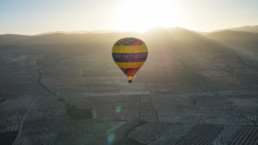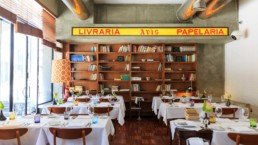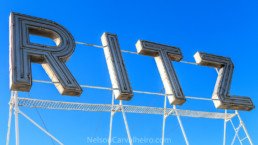Just a couple of hours away from mainland Europe, this Madeira Getaway article will help you make the best of your time in Garden of the Atlantic. On our first attempt to visit Madeira, we were thwarted by high winds and a plane that couldn’t safely land. The journey is always part of the adventure. So on our second try, a few months later, I closed my eyes as we landed (easily) and stepped off the plane blinking into the blinding sunlight with wonder. A short one-hour flight from Lisbon, the ever-present sea glitters like broken glass and, in the distance, the Desertas Islands beckon, golden and mysterious as if a scene from The Odyssey.

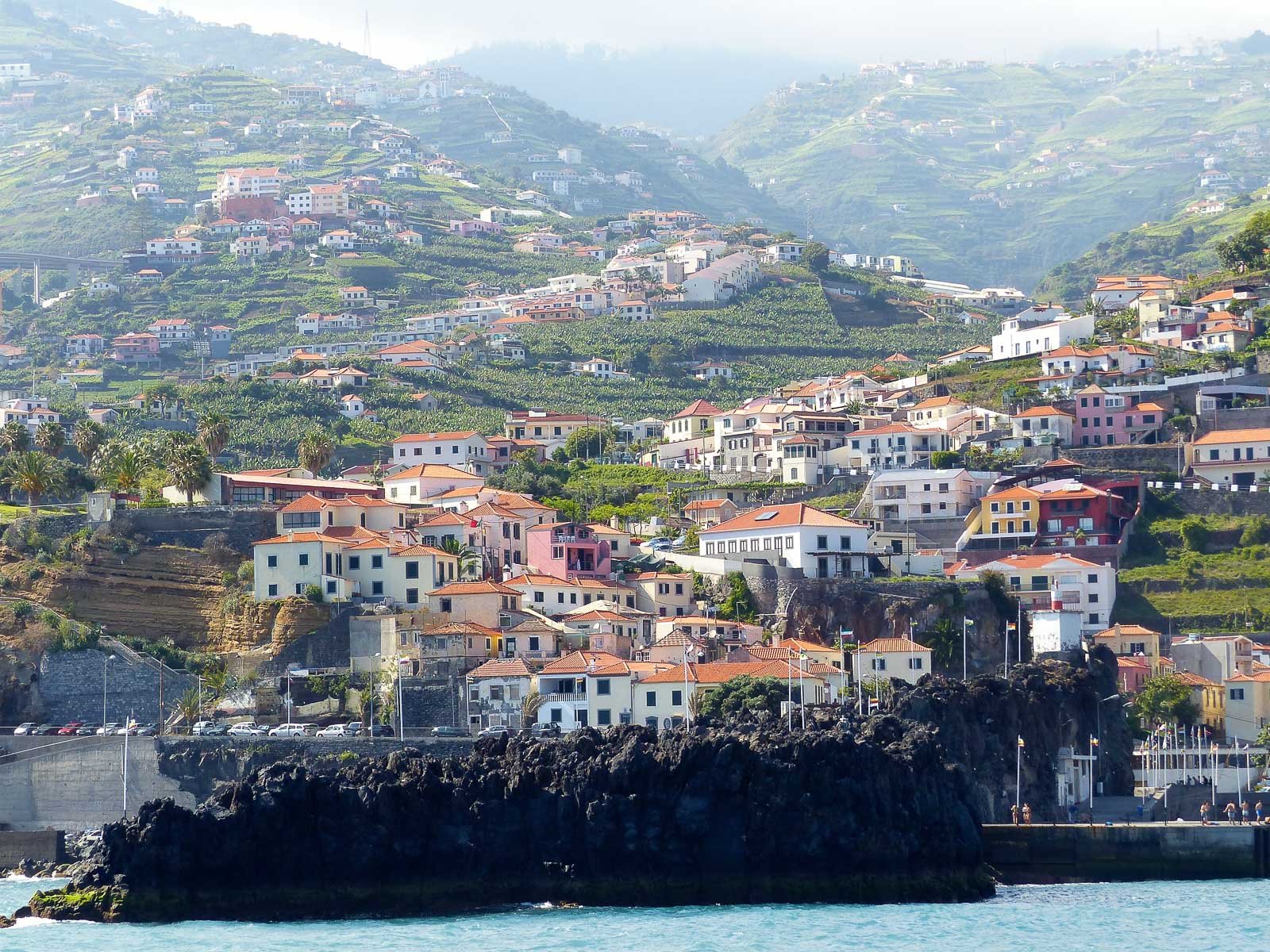
Madeira is a land of improbability, wild and exuberantly bursting-at-the-seams, with a refined European soul. In this unspoiled and sun-drenched island halfway between Portugal and Africa, terraced gardens cling precipitously to a patchwork of land that defies logic. Banana trees and grape vines tangle and embrace each other in their struggle for space. Lush foliage, towering sea cliffs rocky beaches and one of the best wines the world has ever known define the island with a dramatic flourish.
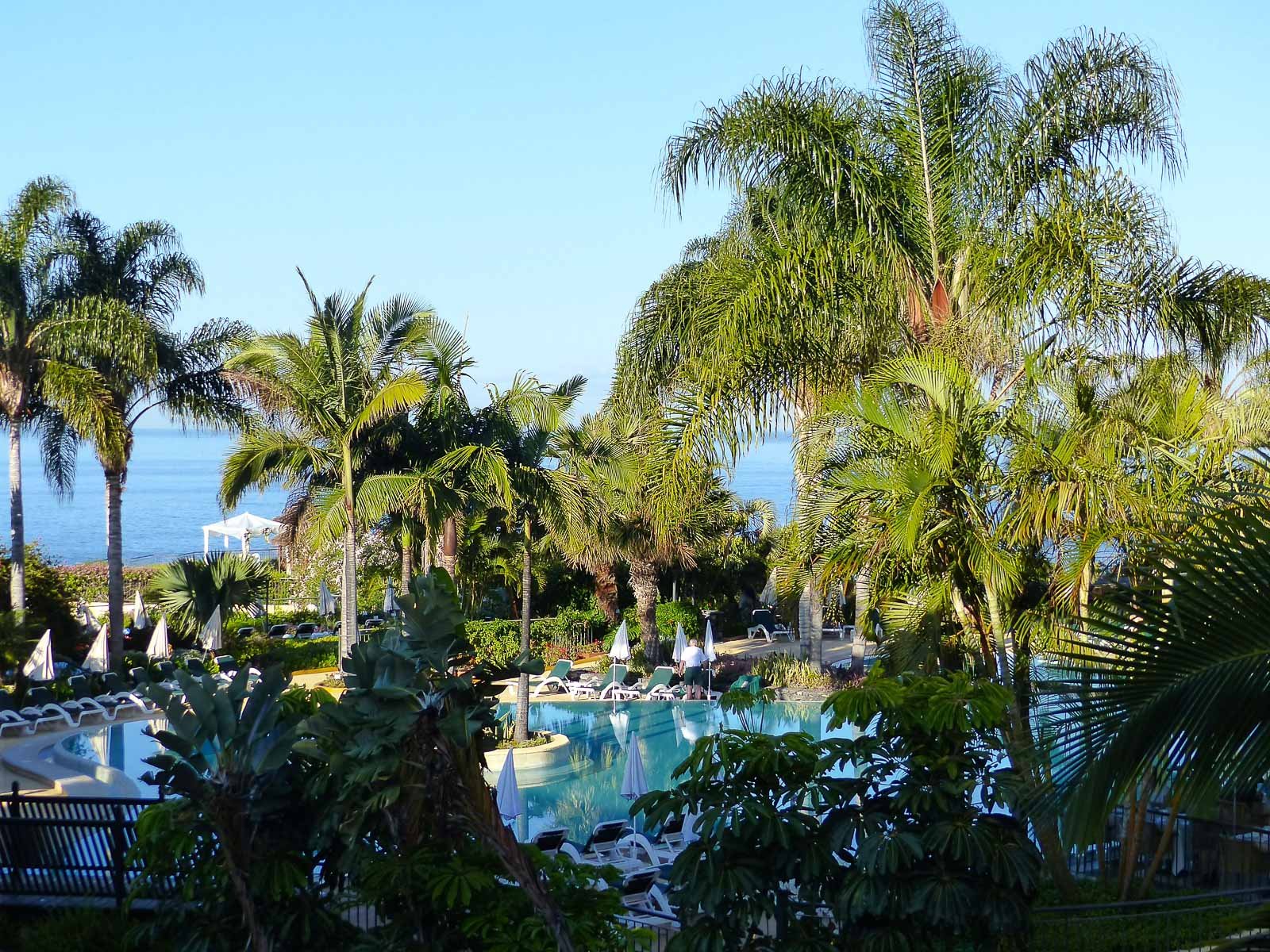
 Madeira was discovered in 1419 by explorers on behalf of the Portuguese king. The island, meaning “island of wood” was at the time a dense forest. In order to settle and develop the land, fires were set which are said to have burned for seven years. Madeira’s first crop was sugar, though soon enough the Caribbean and Brazil would monopolize the trade and the settlers turned to other crops to export, one of these became Madeira’s most important product – it’s wine. As a result of the Napoleonic Wars, the British Empire occupied Madeira until 1814 when the island returned to Portugal but not before the British publicized their love affair with Madeira wine. Today the island is home to nearly 300,000 people and while agriculture is still an important part of life here, tourism provides the island with an influx of more than 1.2 visitors per year.
Madeira was discovered in 1419 by explorers on behalf of the Portuguese king. The island, meaning “island of wood” was at the time a dense forest. In order to settle and develop the land, fires were set which are said to have burned for seven years. Madeira’s first crop was sugar, though soon enough the Caribbean and Brazil would monopolize the trade and the settlers turned to other crops to export, one of these became Madeira’s most important product – it’s wine. As a result of the Napoleonic Wars, the British Empire occupied Madeira until 1814 when the island returned to Portugal but not before the British publicized their love affair with Madeira wine. Today the island is home to nearly 300,000 people and while agriculture is still an important part of life here, tourism provides the island with an influx of more than 1.2 visitors per year.
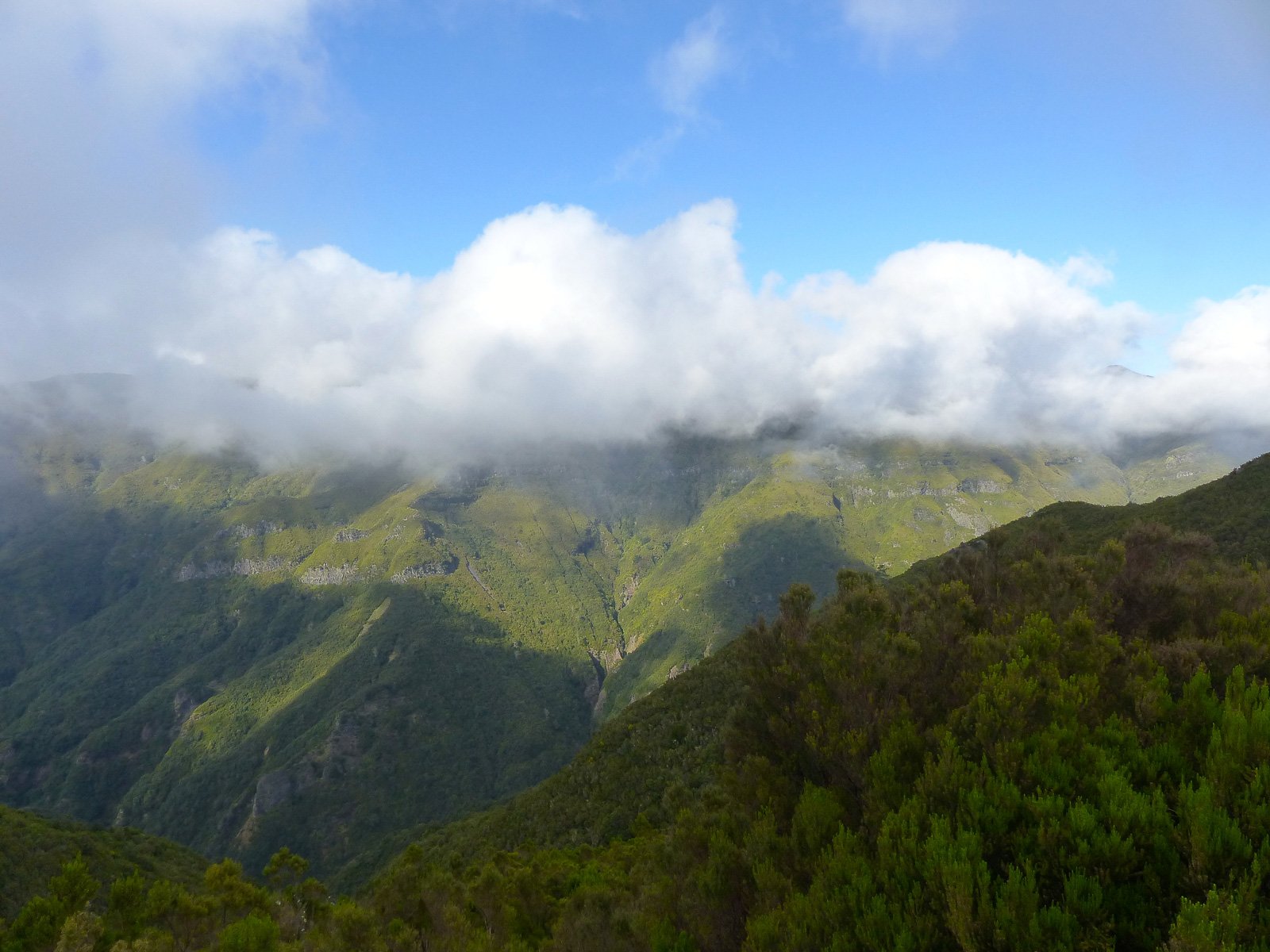 The Cliff Bay Hotel in Funchal, part of the Porto Bay Group, sets the stage beautifully for visitors to Madeira. On the morning we arrive, we inhale huge gulps of tropical air scented by the sea and by the spectacular gardens. Festive bird of paradise, wild orchids, palms and ferns of all shapes and size beg to be touched, while Mediterranean lavender and rosemary thrive with the vast expanse of Atlantic as their backdrop.
The Cliff Bay Hotel in Funchal, part of the Porto Bay Group, sets the stage beautifully for visitors to Madeira. On the morning we arrive, we inhale huge gulps of tropical air scented by the sea and by the spectacular gardens. Festive bird of paradise, wild orchids, palms and ferns of all shapes and size beg to be touched, while Mediterranean lavender and rosemary thrive with the vast expanse of Atlantic as their backdrop.
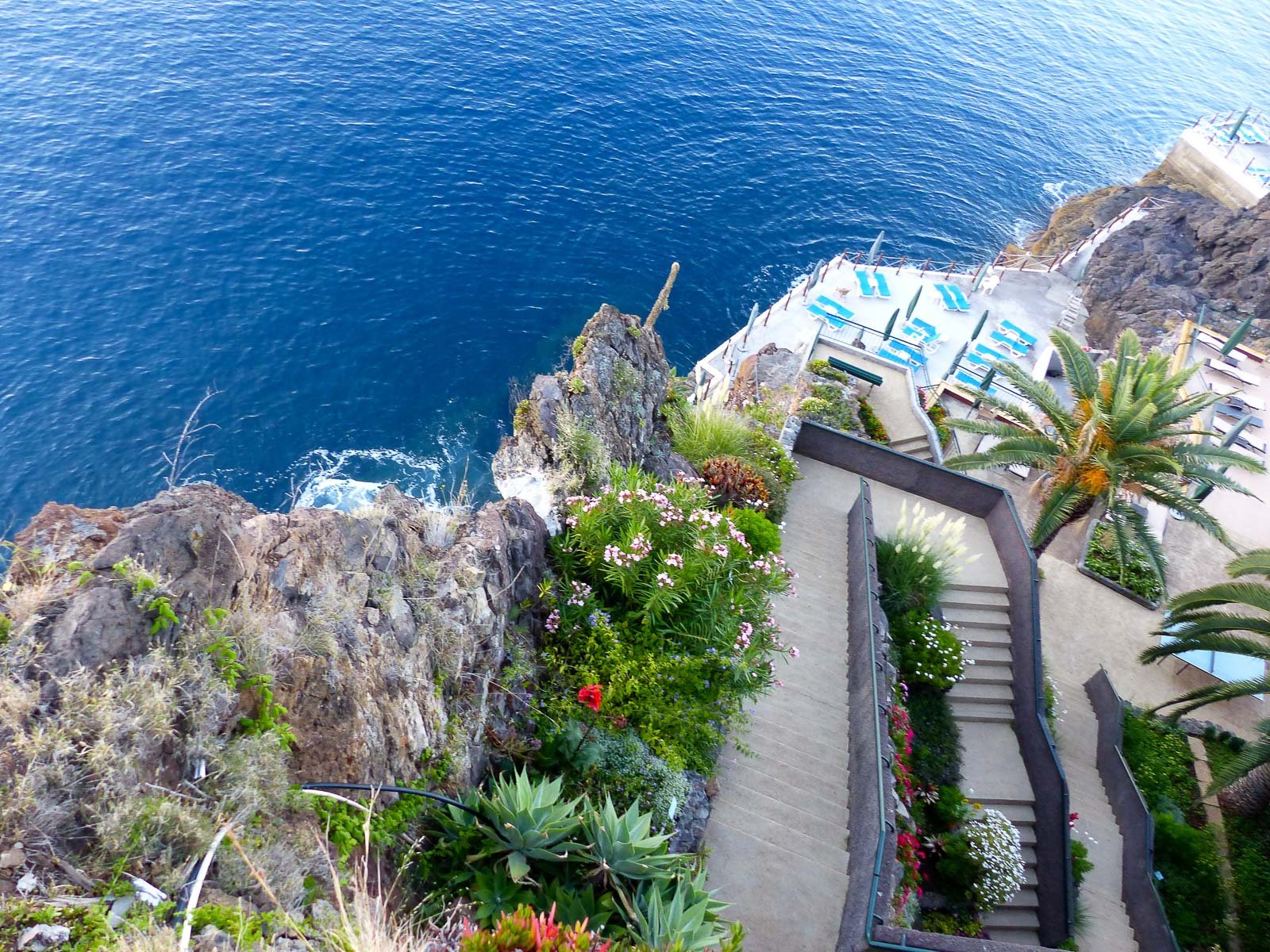
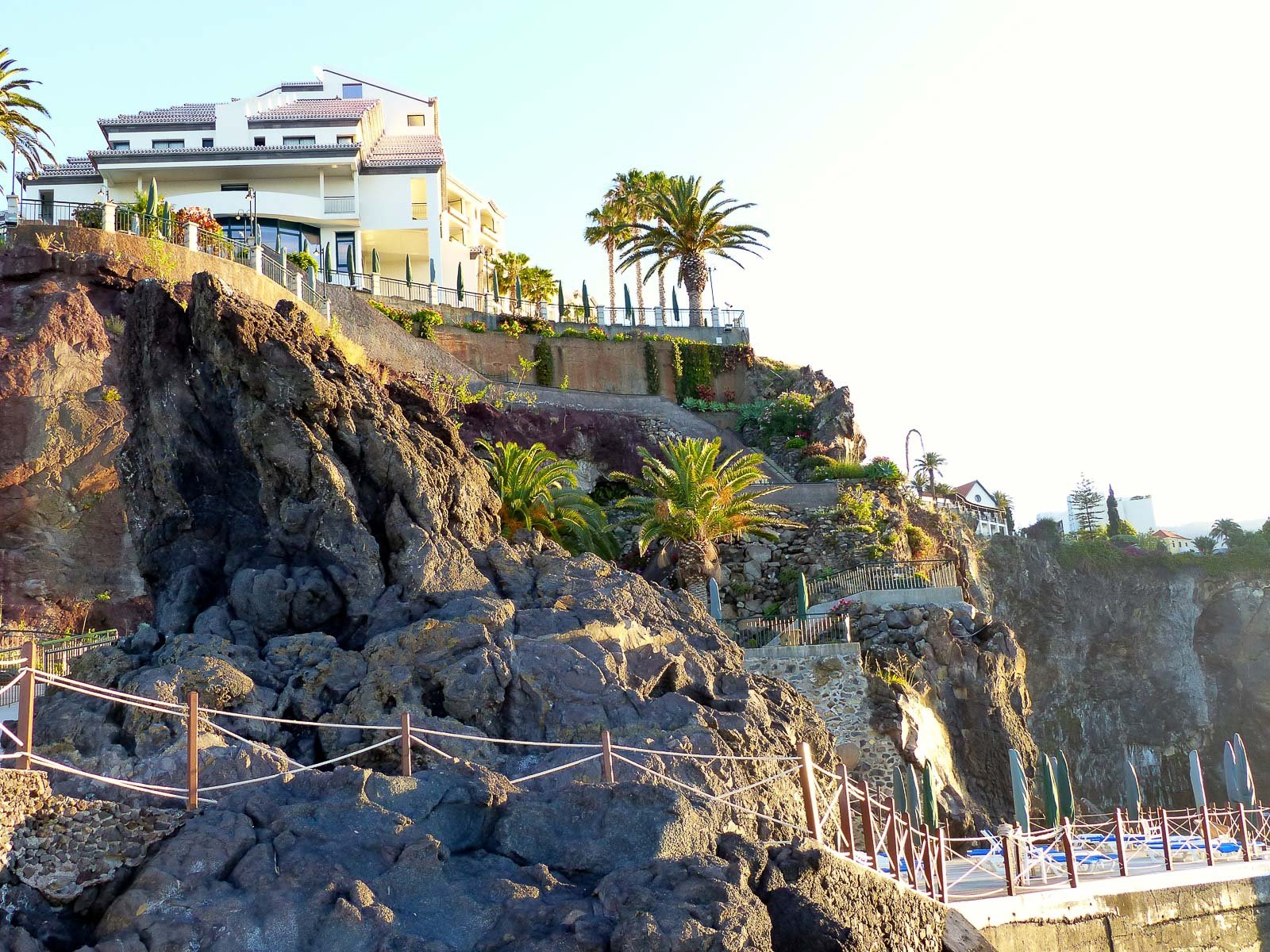 The hotel overlooks Funchal Bay and the many terraces, gardens, swimming pools, bars and restaurants take full advantage of the view. After a tour through the gardens and a shot of delicious, dark Portuguese coffee, we drop our things and head for town. Located a short drive from the center of Funchal, Madeira’s vibrant capital, we lose ourselves among the colorful streets and colonial architecture.
The hotel overlooks Funchal Bay and the many terraces, gardens, swimming pools, bars and restaurants take full advantage of the view. After a tour through the gardens and a shot of delicious, dark Portuguese coffee, we drop our things and head for town. Located a short drive from the center of Funchal, Madeira’s vibrant capital, we lose ourselves among the colorful streets and colonial architecture.
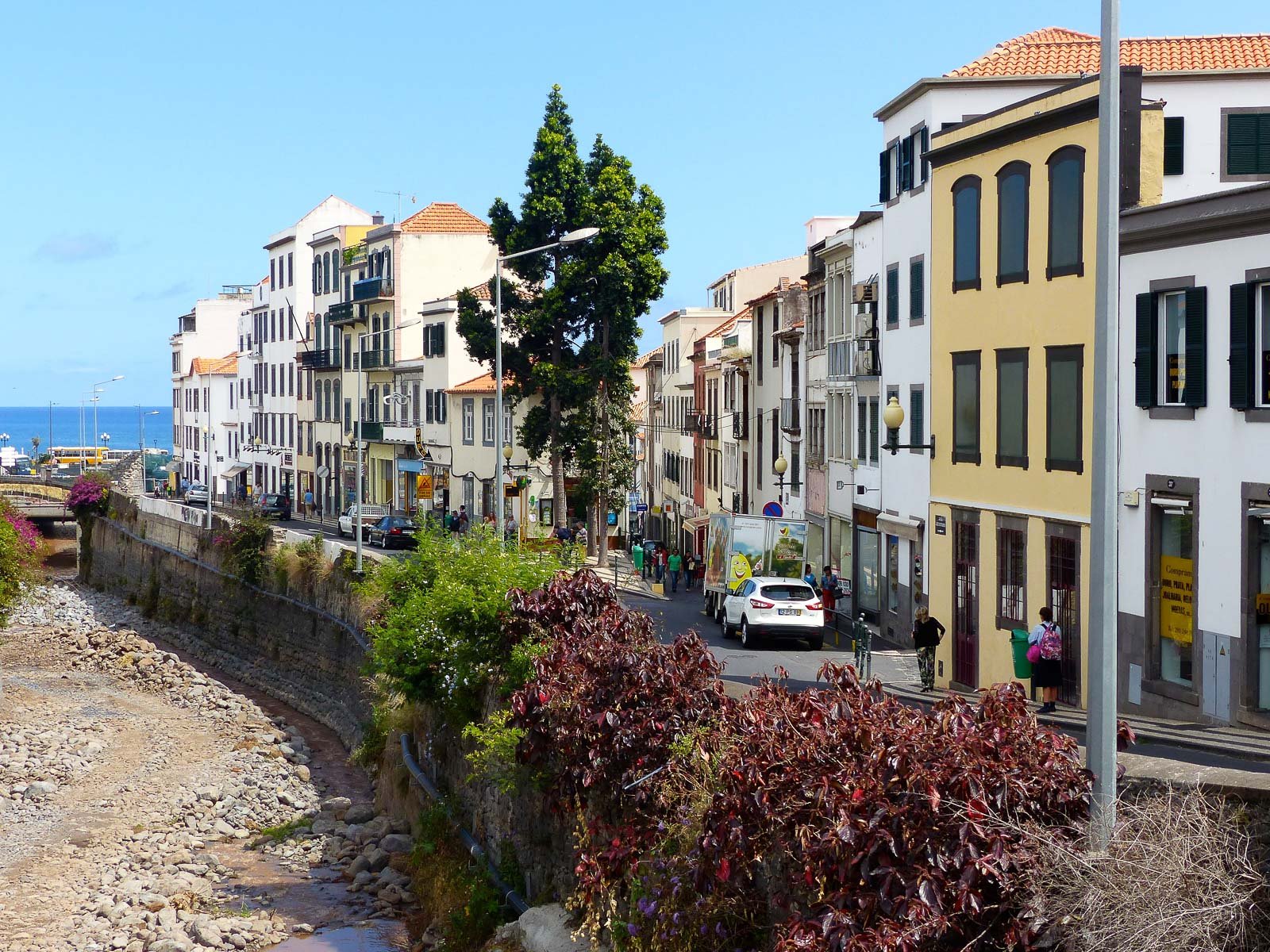
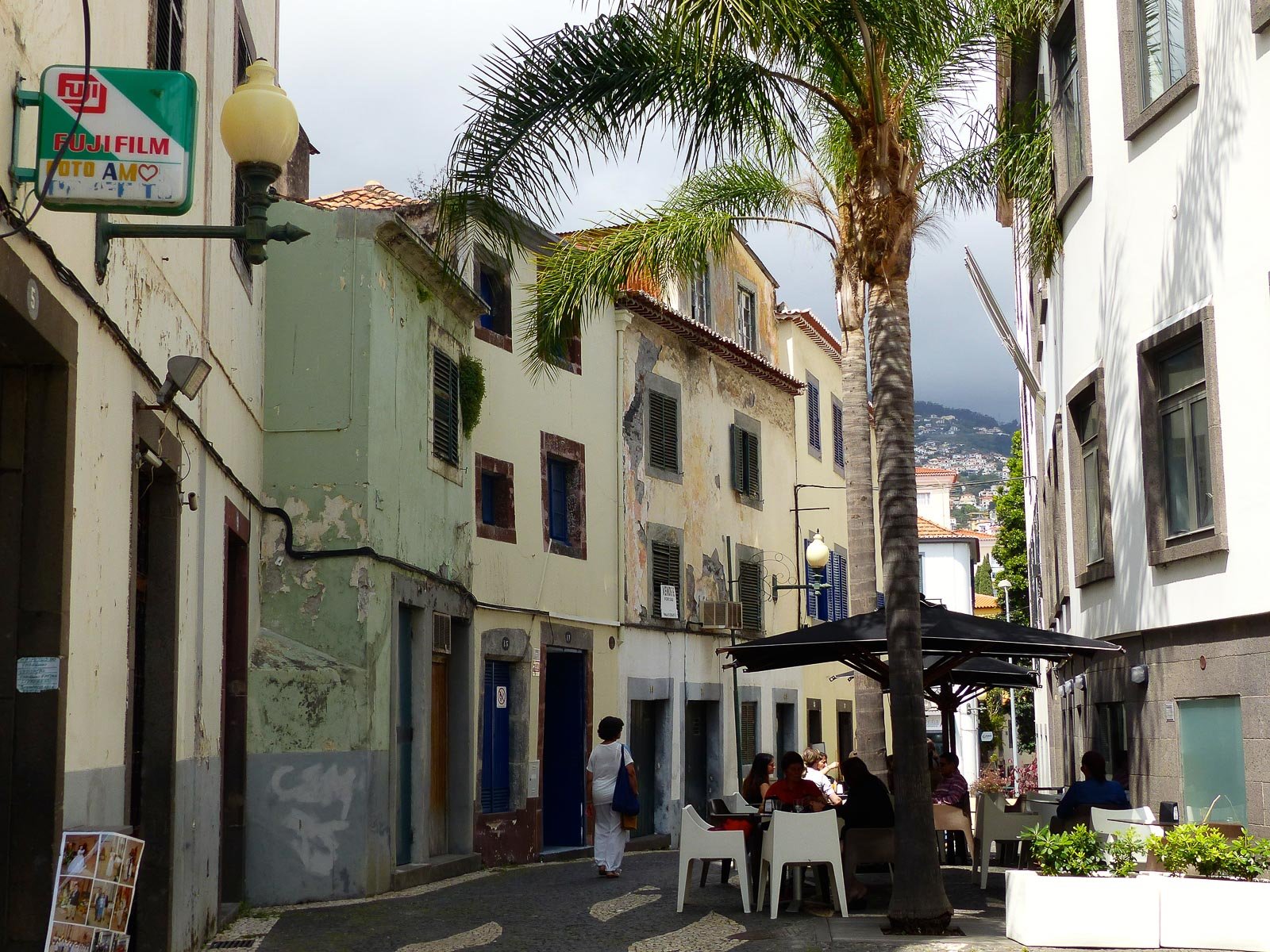
Facing the deep blue Atlantic with a backdrop of dramatic mountains, the houses and gardens and hotels of the city (home to just over 100,000 residents) drape themselves over the string of strikingly green hills. As spectacular as the views are from land, we long to take in the shoreline from the sea. The waters around the island are rich with schools of dolphins and whales, and so we jump on one of the many boats offering excursions. It’s not long before we are surrounded by what seems like hundreds of spotted dolphins frolicking around us. We stop in a secluded cove, jumping from the deck of the boat into the pristine waters surrounding Madeira. And afterward, we head back to dry land, happy and salty with seawater, to toast the sunset with a crisp Coral Lager, the local beer.
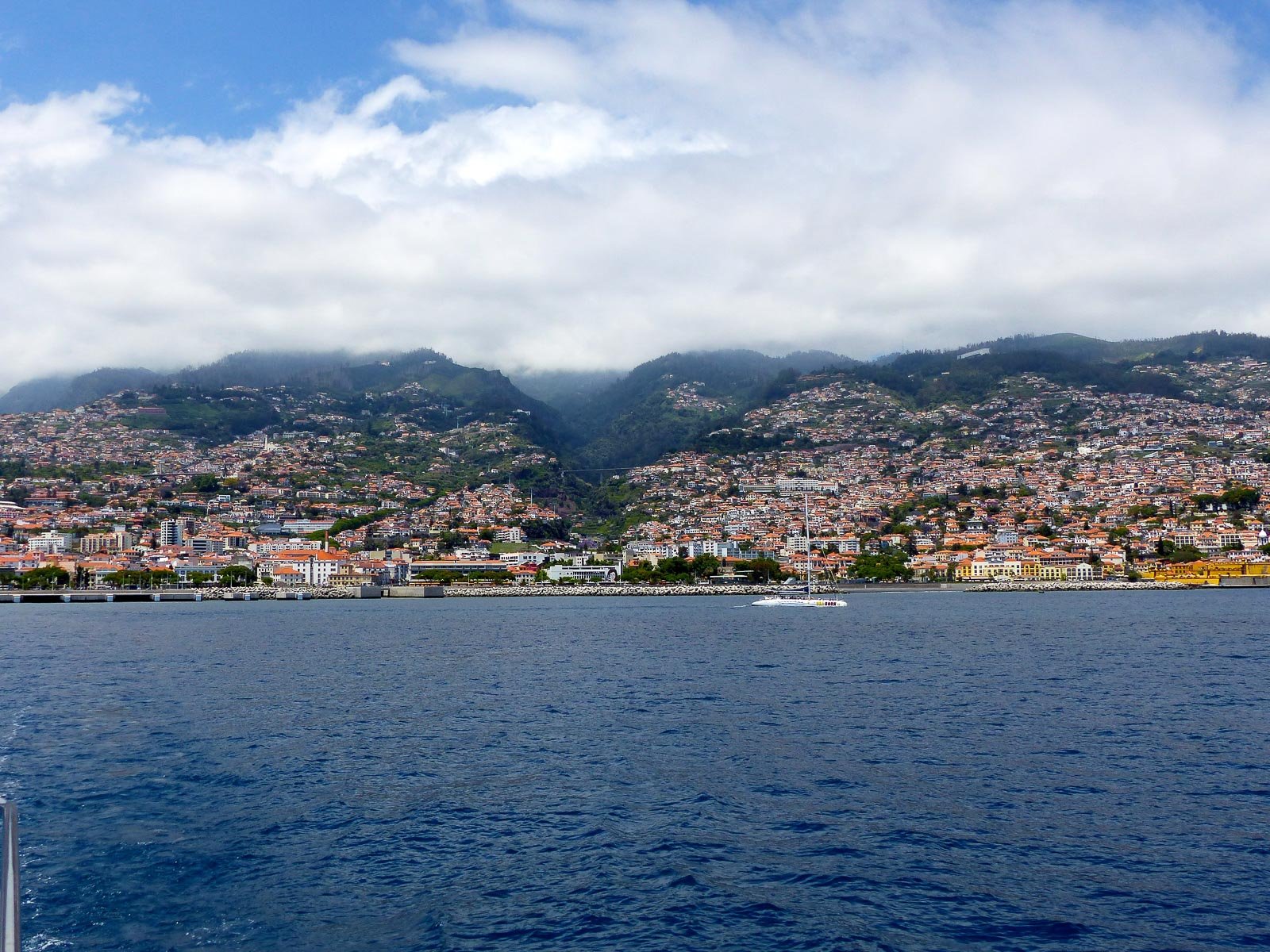
Madeira is a small island but it has a rich history of food and wine. The next day, we met up with the team from Discovering Madeira for a walking tour featuring the best of Funchal. It’s easy to cover the town on foot in a single afternoon, eating and drinking our way through bolo de mel (a local honey cake made with sugarcane) and Madeira wine, a pairing that could have only been created by the gods. Beyond the traditional foods, fueled by a new generation of wine drinkers and wine producers, Madeira is in the midst of a food-and-wine renaissance, and we sampled several table wines made by new producers with Verdelho grapes, historically only used for Madeira wine.
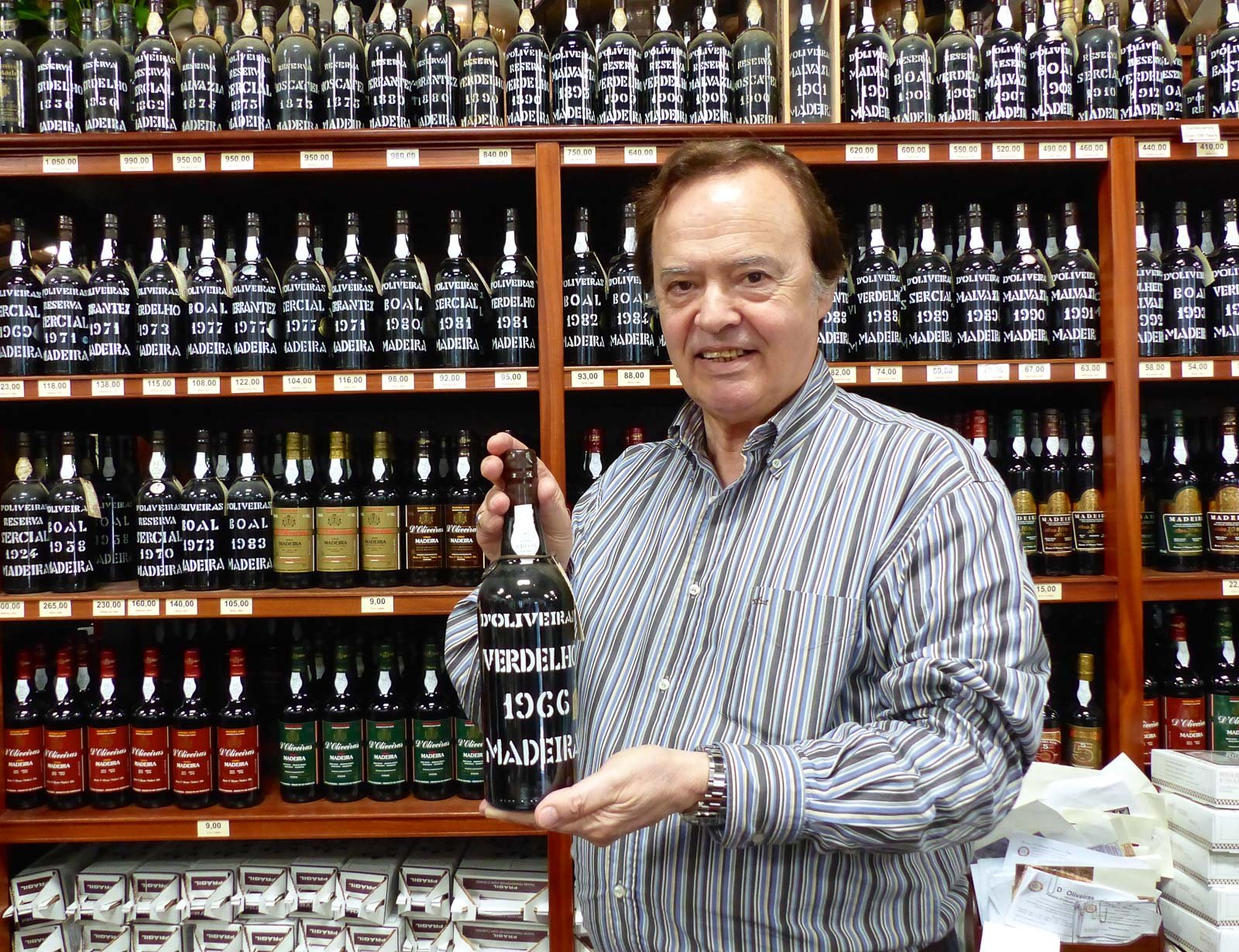 We feasted on the riches of the sea around Madeira, including the deep-water peixe espada (black scabbardfish), lapas, an oyster-like mollusk tasting distinctly of the sea, and a salad made of delicious mochama, tuna that is air-dried in one of the colorful fishing villages along the coast. Our tour ended with a shot of Poncha, a nod to the seafaring tradition of the island. A traditional fisherman’s drink meant to ward off the cold, it is made with aguardente of sugarcane (also called rum in Madeira, but differing wildly from Caribbean rum), lemon, and sugar.
We feasted on the riches of the sea around Madeira, including the deep-water peixe espada (black scabbardfish), lapas, an oyster-like mollusk tasting distinctly of the sea, and a salad made of delicious mochama, tuna that is air-dried in one of the colorful fishing villages along the coast. Our tour ended with a shot of Poncha, a nod to the seafaring tradition of the island. A traditional fisherman’s drink meant to ward off the cold, it is made with aguardente of sugarcane (also called rum in Madeira, but differing wildly from Caribbean rum), lemon, and sugar.

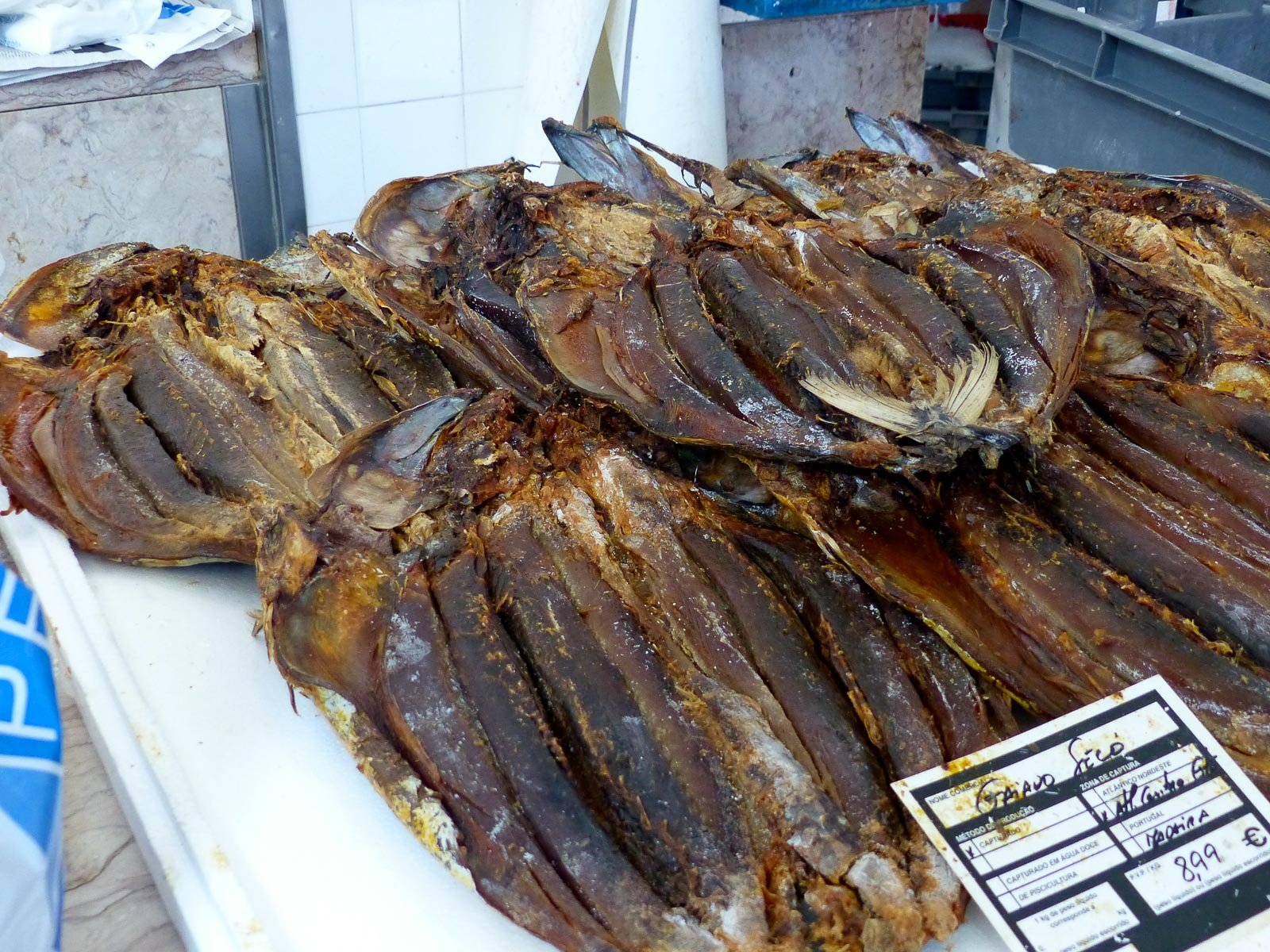
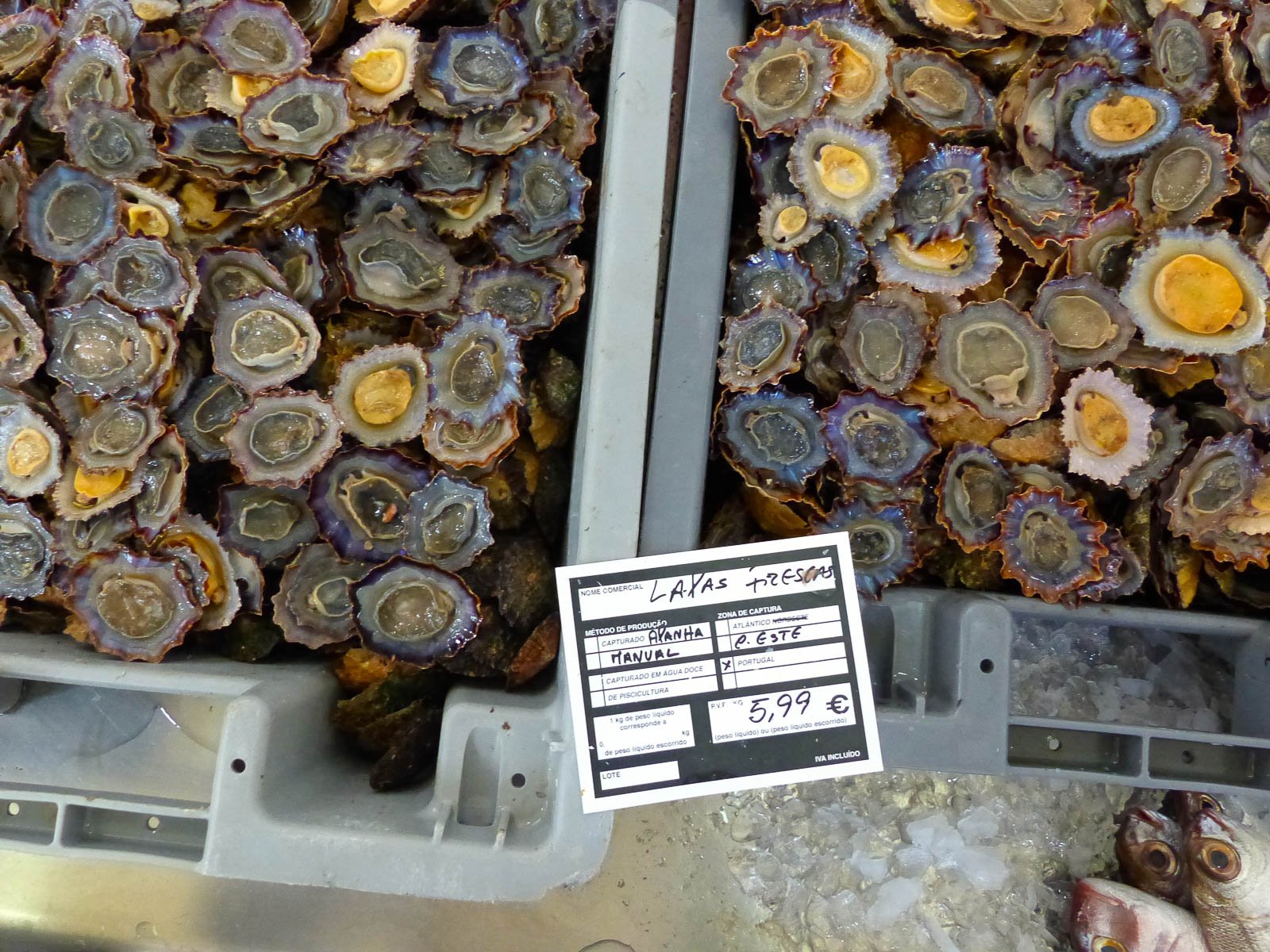 The climate in Madeira is considered Mediterranean, but microclimates abound. The sun shines most days, but on this morning the fog rolled lazily in and out. We headed for one of the island’s bright spots – the Mercardo dos Lavradores. If ever there was a dull fruit, a bland vegetable, a wilting flower, they would not find a home here. Located in the heart of old Funchal, the market was built in 1940, and is a jumble of produce, flowers, and fish with ladies in traditional dress and vendors selling everything from wicker baskets to exotic fruits, like passion fruit, the famous Madeira bananas (which make other varieties taste like a watered-down version) and fish that looks like it just jumped out of the water. Prices are steep and some of the vendors were more pushy than pleasant, but the market provides a colorful and chaotic start to the day.
The climate in Madeira is considered Mediterranean, but microclimates abound. The sun shines most days, but on this morning the fog rolled lazily in and out. We headed for one of the island’s bright spots – the Mercardo dos Lavradores. If ever there was a dull fruit, a bland vegetable, a wilting flower, they would not find a home here. Located in the heart of old Funchal, the market was built in 1940, and is a jumble of produce, flowers, and fish with ladies in traditional dress and vendors selling everything from wicker baskets to exotic fruits, like passion fruit, the famous Madeira bananas (which make other varieties taste like a watered-down version) and fish that looks like it just jumped out of the water. Prices are steep and some of the vendors were more pushy than pleasant, but the market provides a colorful and chaotic start to the day.
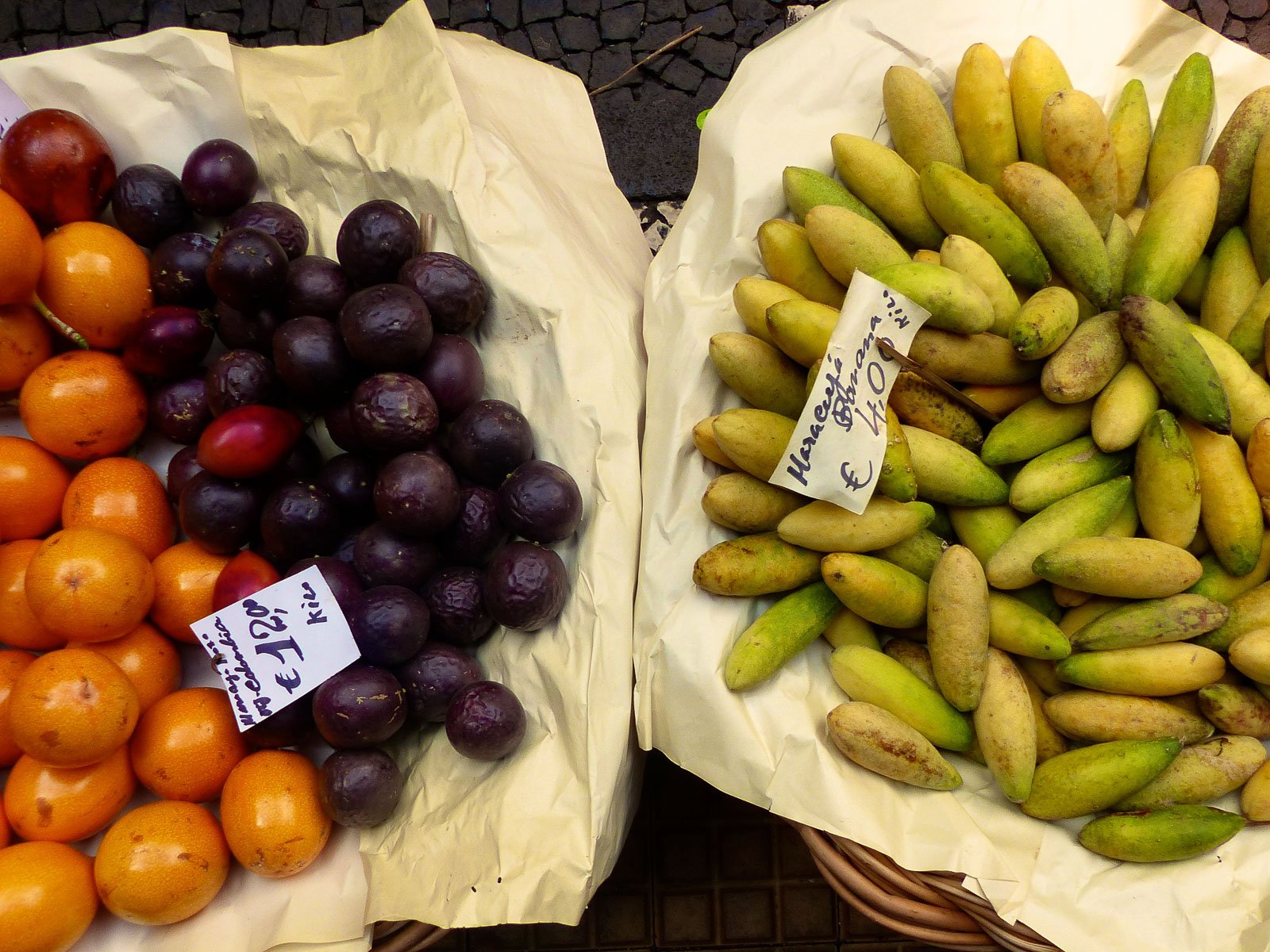


Not as chaotic, it turns out, as the secondary roads in Funchal. Having spent the better part of our visit on foot and boat, we get in the car and hit the road. The teleferico, or cable car, is Funchal’s modern answer to the train that used to carry passengers and goods up the dizzying heights of the city. The drive to the top platform (the teleferico can also be picked up at the bottom) takes us on roads that leave us with a feeling of vertigo. So much so that by the time we are safely ensconced inside the cable car, the 560 meter drop from top to bottom is pure joy – the terra cotta tiles of the city mix with the greens and blues of mountain and sea below us and offering a birds-eye view of the backyard plots where farmers and growers and gardeners alike produce so much of Madeira’s famed agriculture.
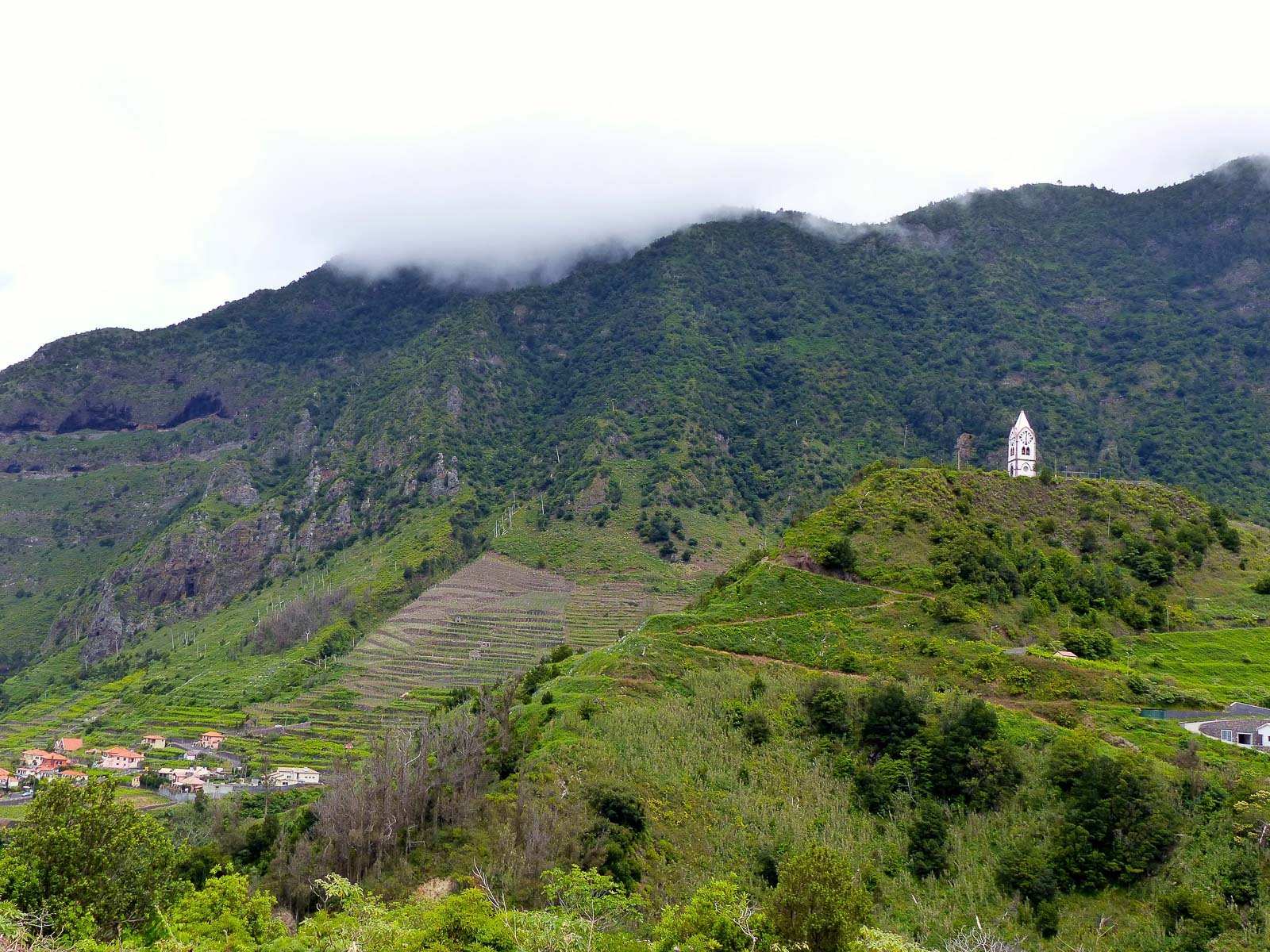
But there is much more to see of Madeira than Funchal and once back on terra firma, we head to the northwestern tip of the island, across Madeira’s volcanic heart and towards the magnificent coastline and natural swimming pools of Porto Moniz.
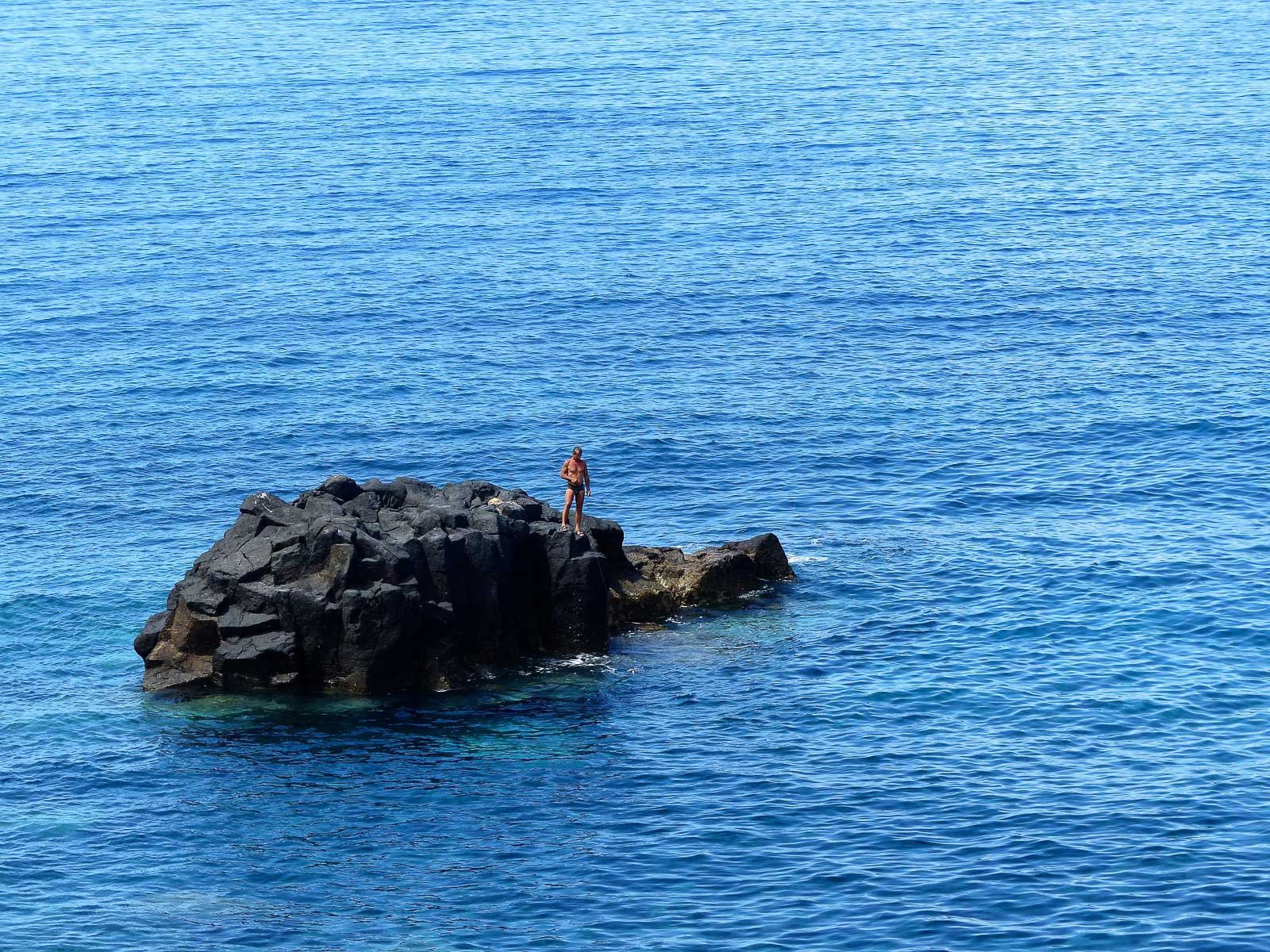
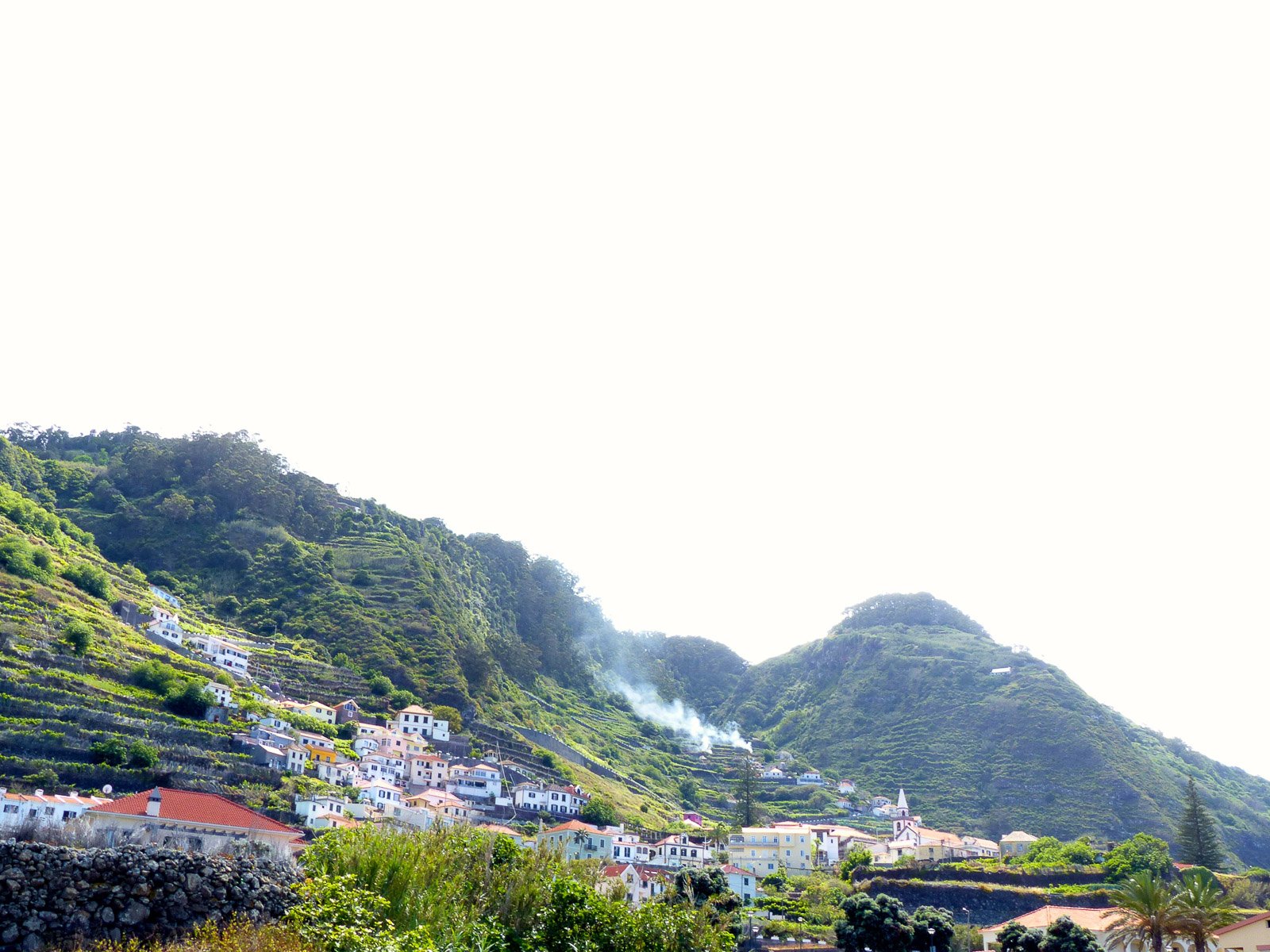


Rural Madeira is magnificent. With the influx of EU money, the government built an infrastructure of highways and tunnels that are easy to navigate if less scenic. But the old roads still exist, and while they are not passable anymore by car, we stopped and walked along them, finding waterfalls that tumble from magical crevices, surf that crashes over volcanic rocks that look like dinosaur eggs, and flora and fauna that can tell stories of the centuries. Carved from volcanic rock, the saltwater pools beckon to swimmers as a safe haven in front of a sea that crashes wildly into the rocks. The drive through the mountains on the way back to Funchal is equally spectacular. At 6,000 feet above sea level, the cows outnumber people and the drive takes us through thick cloud cover and soaring views where the lushness and the scale makes us feel as if we have discovered a secret world unknown to man.
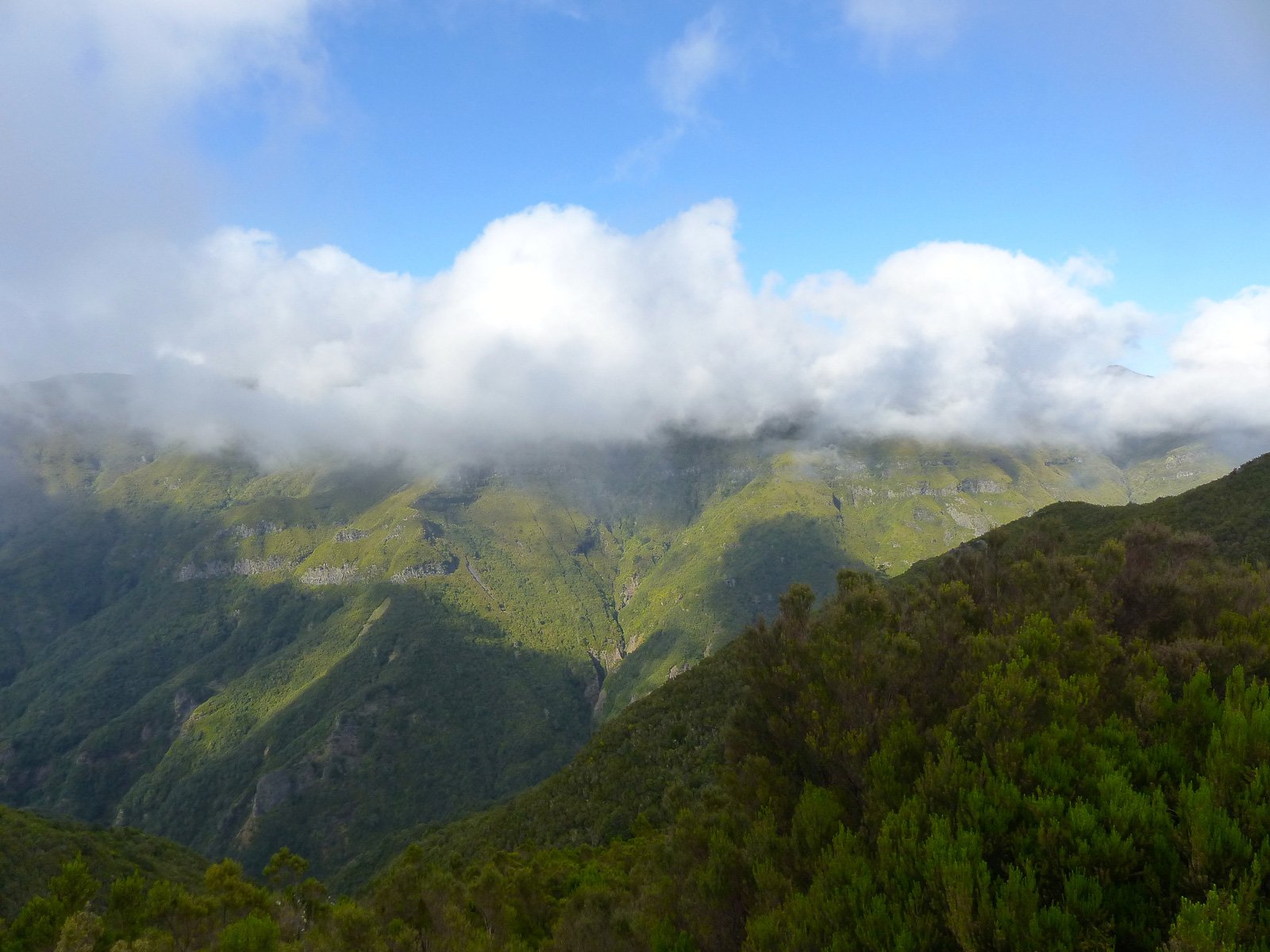


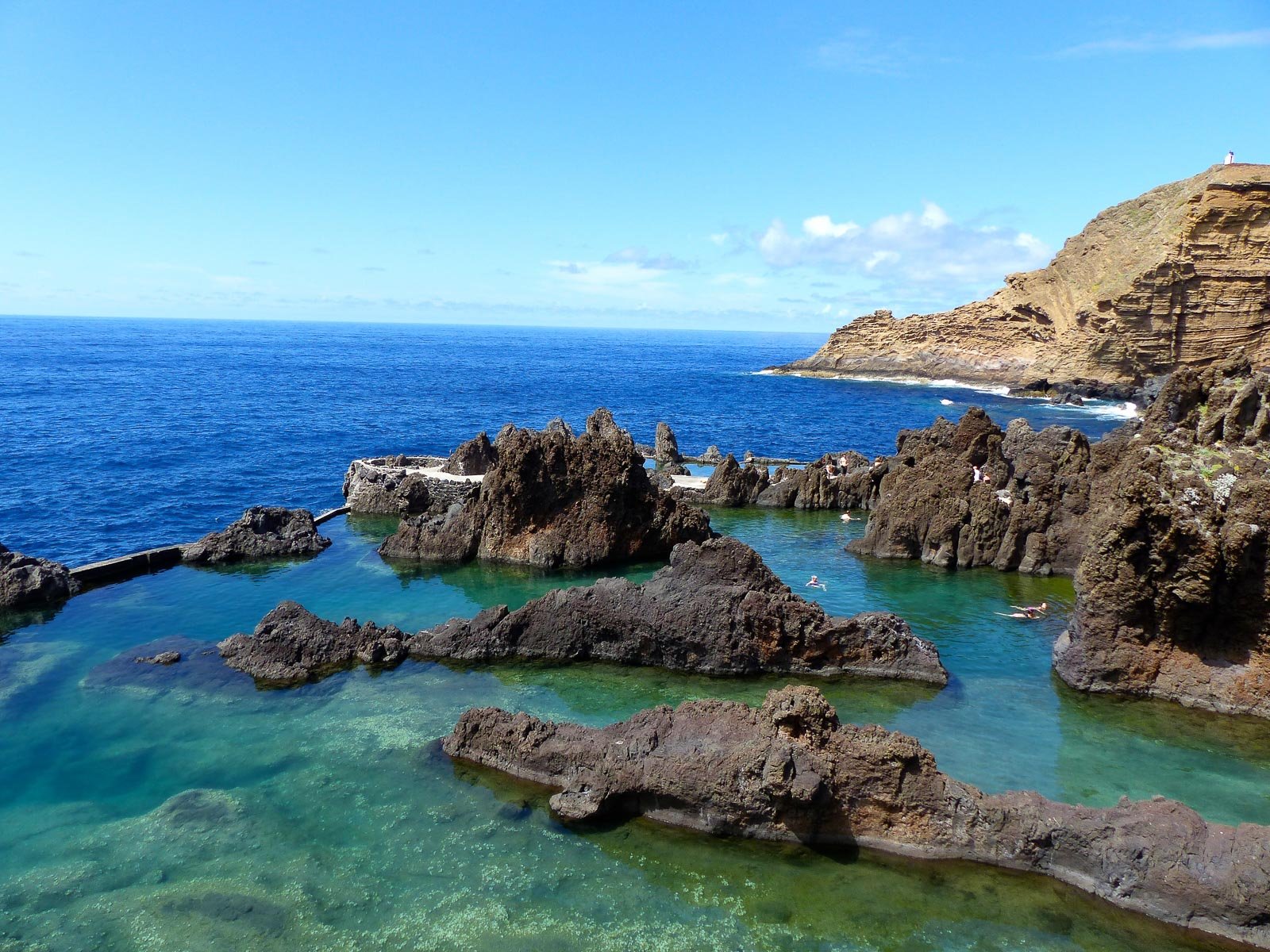
Arriving at the Cliff Bay hotel is the perfect counterpoint to our day exploring the countryside. The quiet luxury of this five-star hotel is apparent and the view from our room is breathtaking as if it is floating above the ocean, suspended by clouds. The ripples and light across the vast Atlantic are mesmerizing. The hotel is so lovely that I consider spending the day in the spa or by the pool or simply staring out at the sea. The ripest, lushest tropical fruit greets us at breakfast, which we enjoy immensely before we leave to explore another corner of this enchanted island.
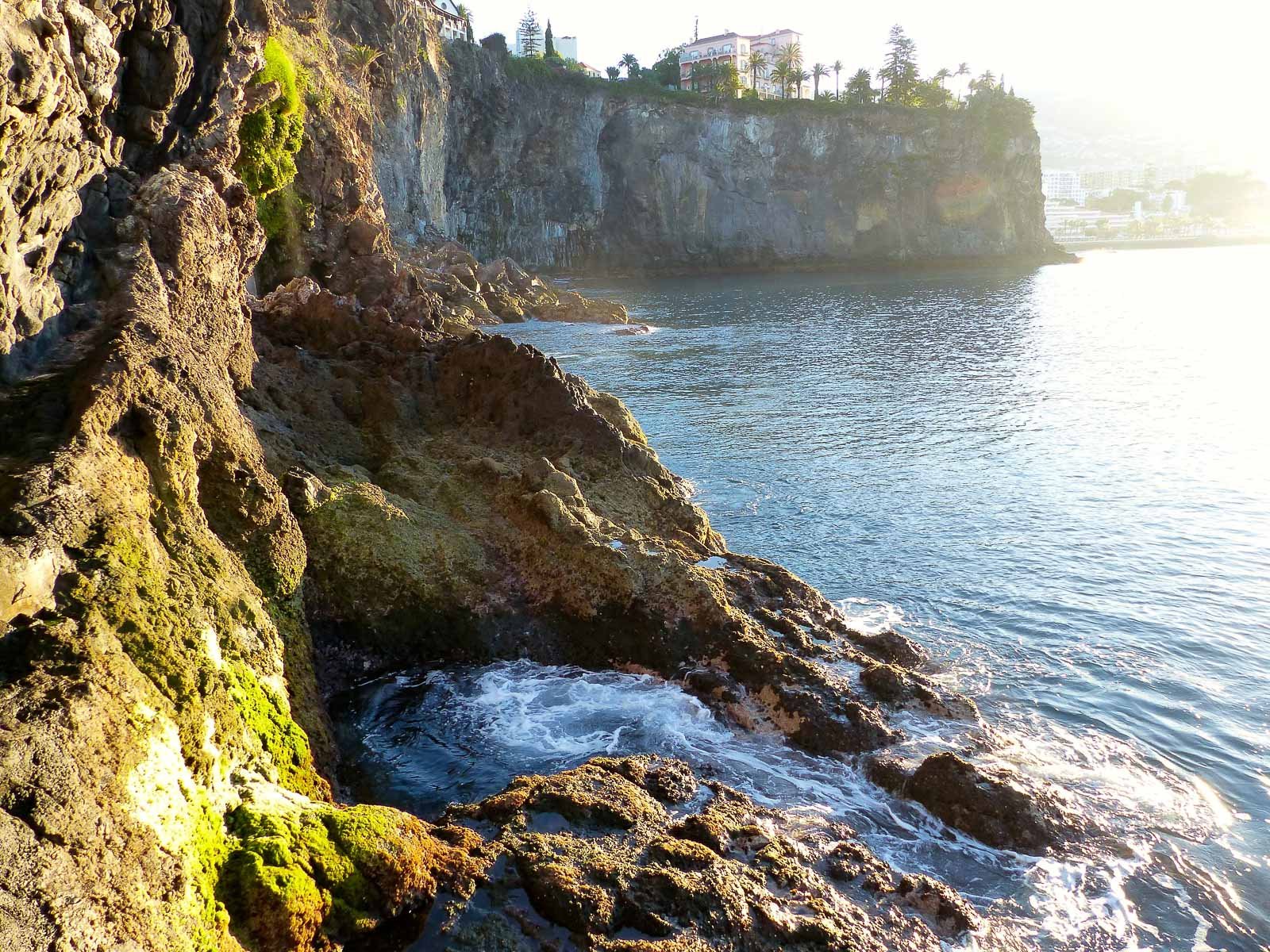
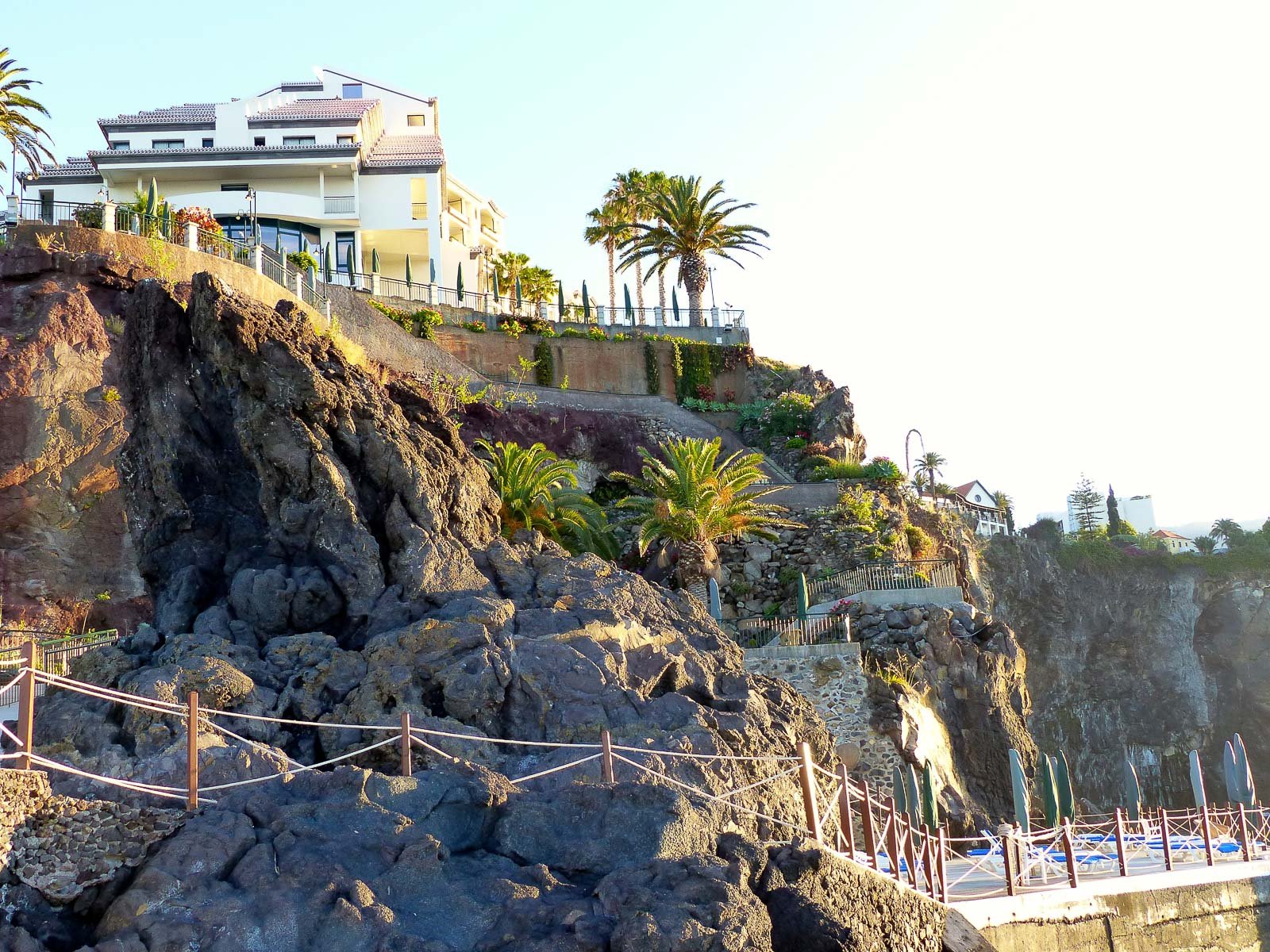

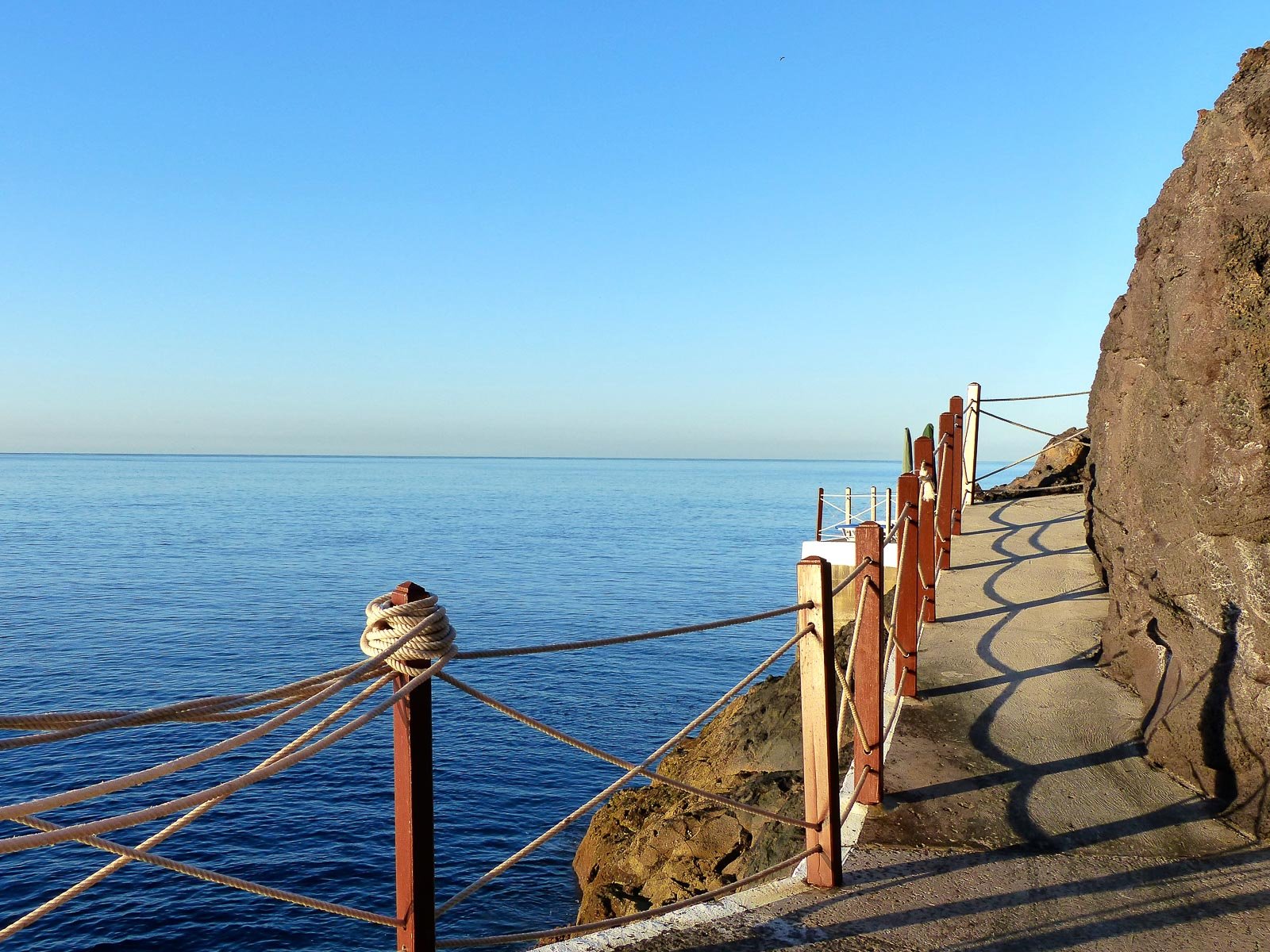
What I know about Fajã dos Padres, the tiny slip of land between one of the tallest cliffs in the world and the sea, is that it is almost inaccessible, that it dates back to the beginning of Madeira’s colonization, and that in its former life, it was a summer residence of the Jesuits. But this gorgeous, wild and improbable outpost saved more than the souls of the holy. The noble grape Malvasia found salvation here as well. Set in a remote cove, this land produces fantastic vintage Madeira the old fashioned way, from older plantings of the traditional noble varietals.
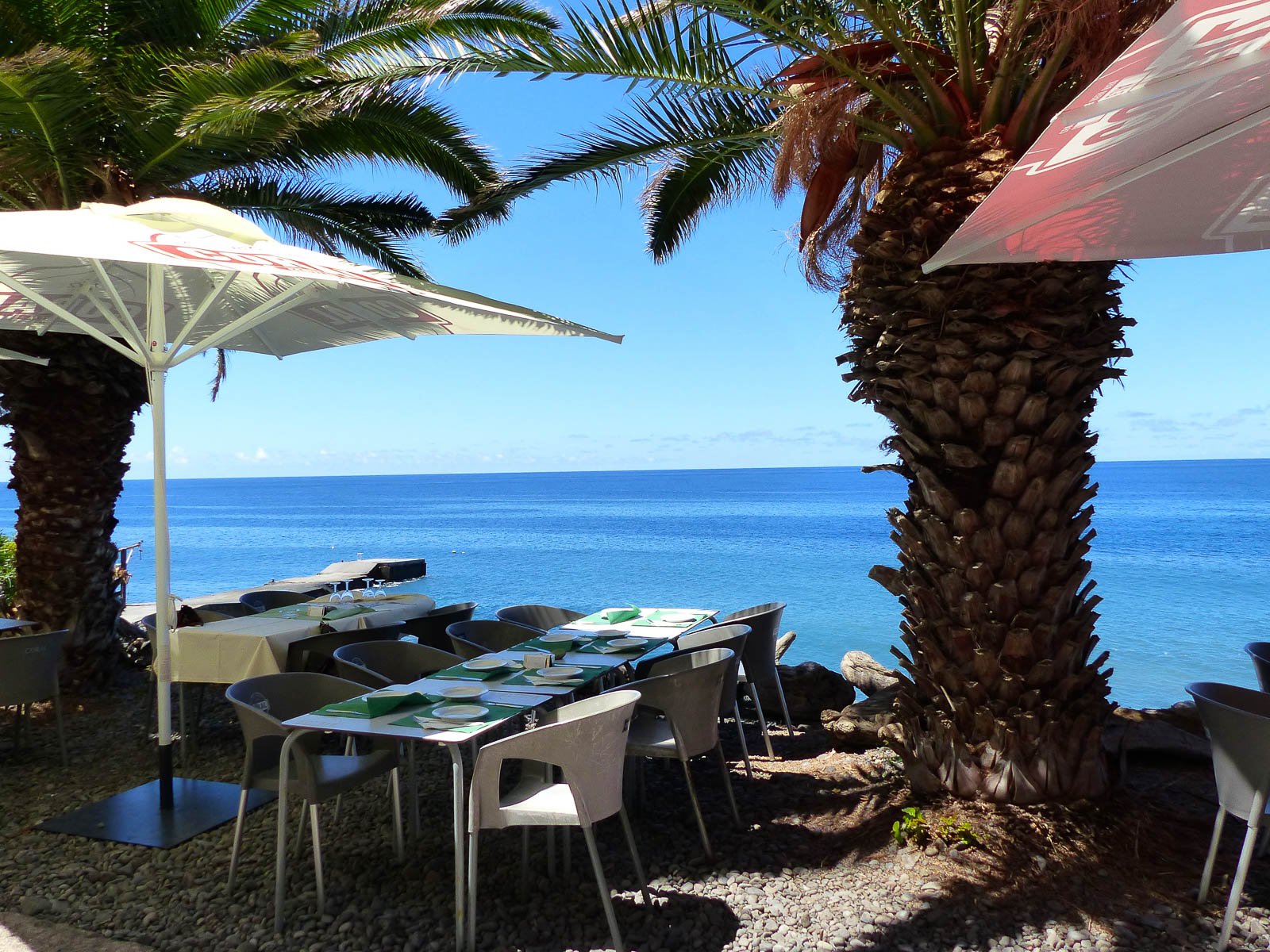
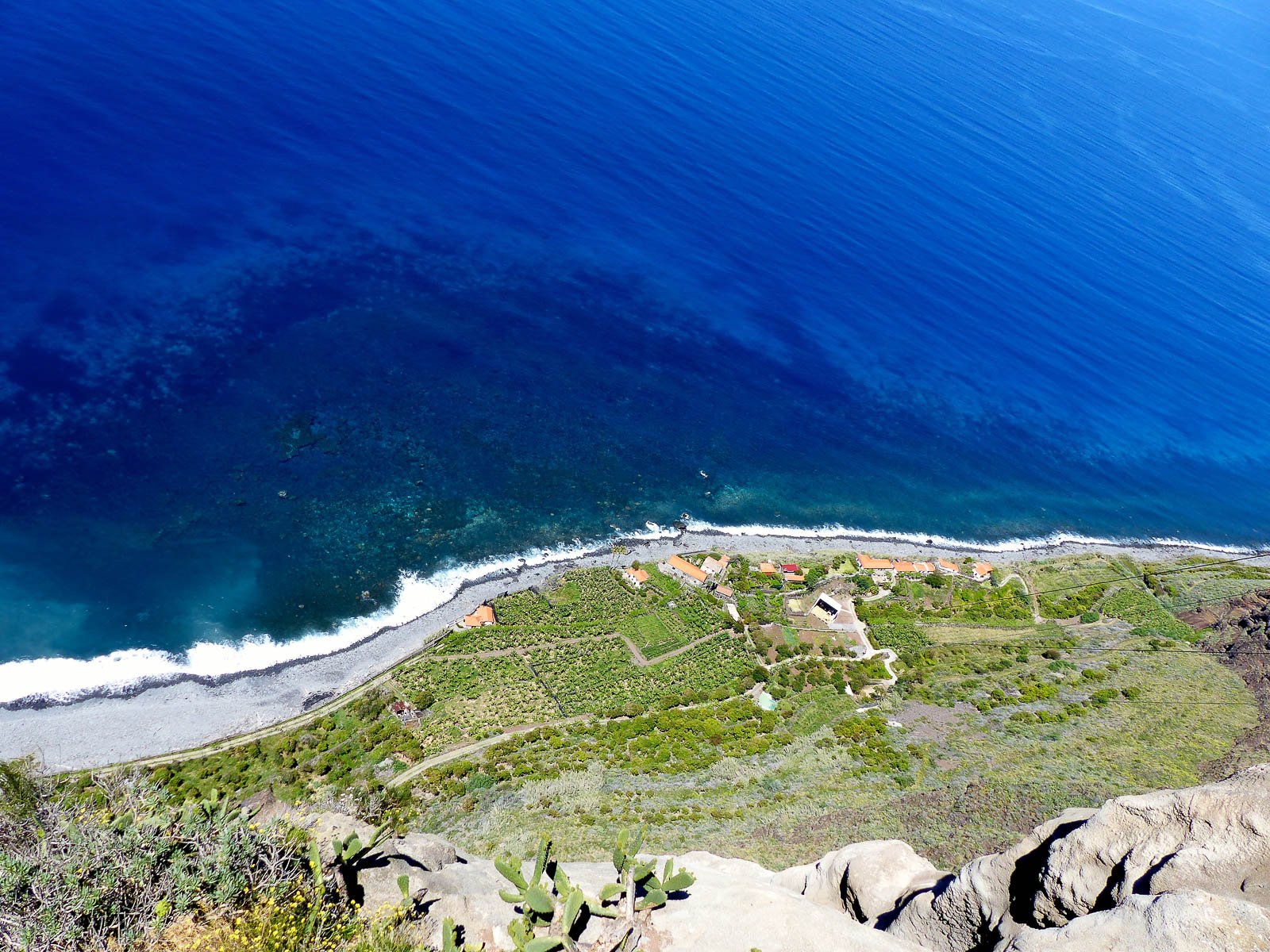
The isolated property, including vineyard, organic farm, restaurant, beach, and cottages, is reachable only by sea or, since 1998, a funicular from the precipitous Cabo Girão, an approach that is not for the faint of heart. A “fajã” is a uniquely Madeiran term for a landfall at the base of a volcanic cliff, formerly a part of the volcanic mountain that crashed and fell at some point, forming a beach-like landing. The soil is typically full of nutrients and is a rich spot for crops. We wandered through the orchards where we found papaya, mango, avocado, and bananas.


 As we sat for lunch, we were greeted by owner and winemaker Mário Jardim Fernandes. Mário told us that Jesuit priests farmed and owned the property starting in the 1600s until they were banned from the island in 1758. The Malvasia they produced was said to be the finest of all Madeira wines. The government eventually nationalized the property, and offered it for sale at a high price, resulting in a lack of bids and no private owner for 30 years. A Madeira family eventually bought the property and farmed it until 1921, when the grandfather of Mário’s wife bought it. When Mário began working the property around 1975, he found a particular old Malvasia vine in a hard to reach area. He called the Madeira Wine Institute to look at it, and they identified it as an original Malvasia Candida planting from the Greek Island of Crete, also once known as Candia, the last remaining plant known on the entire island of Madeira. They cloned it and Mário used the clone for replantings in the 1980s.
As we sat for lunch, we were greeted by owner and winemaker Mário Jardim Fernandes. Mário told us that Jesuit priests farmed and owned the property starting in the 1600s until they were banned from the island in 1758. The Malvasia they produced was said to be the finest of all Madeira wines. The government eventually nationalized the property, and offered it for sale at a high price, resulting in a lack of bids and no private owner for 30 years. A Madeira family eventually bought the property and farmed it until 1921, when the grandfather of Mário’s wife bought it. When Mário began working the property around 1975, he found a particular old Malvasia vine in a hard to reach area. He called the Madeira Wine Institute to look at it, and they identified it as an original Malvasia Candida planting from the Greek Island of Crete, also once known as Candia, the last remaining plant known on the entire island of Madeira. They cloned it and Mário used the clone for replantings in the 1980s.



After lunch and a swim off the pier that extends into the sea from the rocky beach, we joined Mário in his wine cellar to taste some vintage Madeiras, the youngest wines are well-balanced with good acidity while the older vintages are gorgeous and honeyed – the nectar of the gods. If ever there was a place to be a castaway, Fajã dos Padres would be it for me.
While Madeira is perhaps best known for its storied winemaking process, It has world-class food to match. Il Gallo d’Oro is the two Michelin star restaurant inside The Cliff Bay. Chef Benoit Sinthon has been at the helm since 2004 and his menu reflects the best regional products from Madeira and the Iberian peninsula.
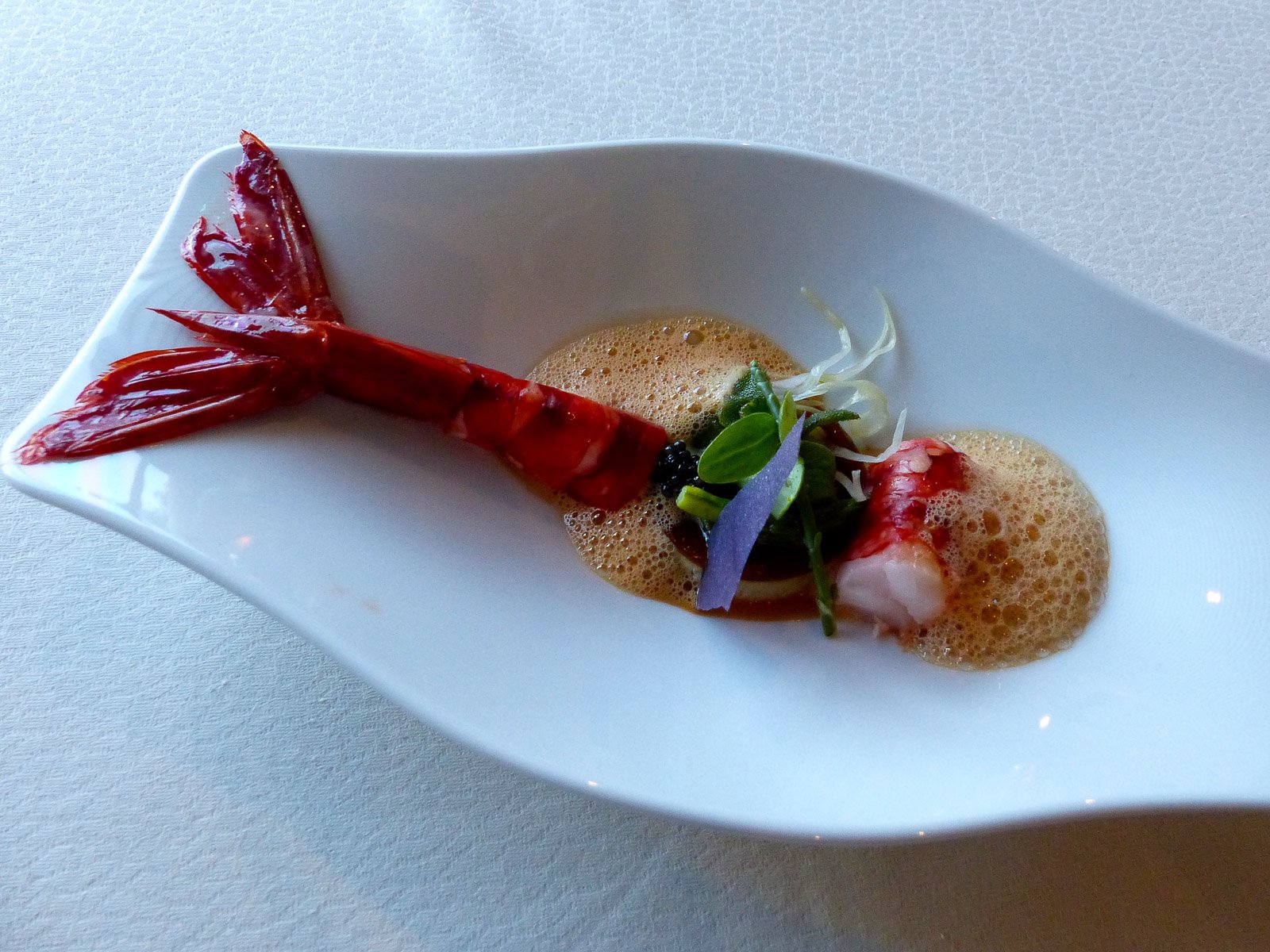

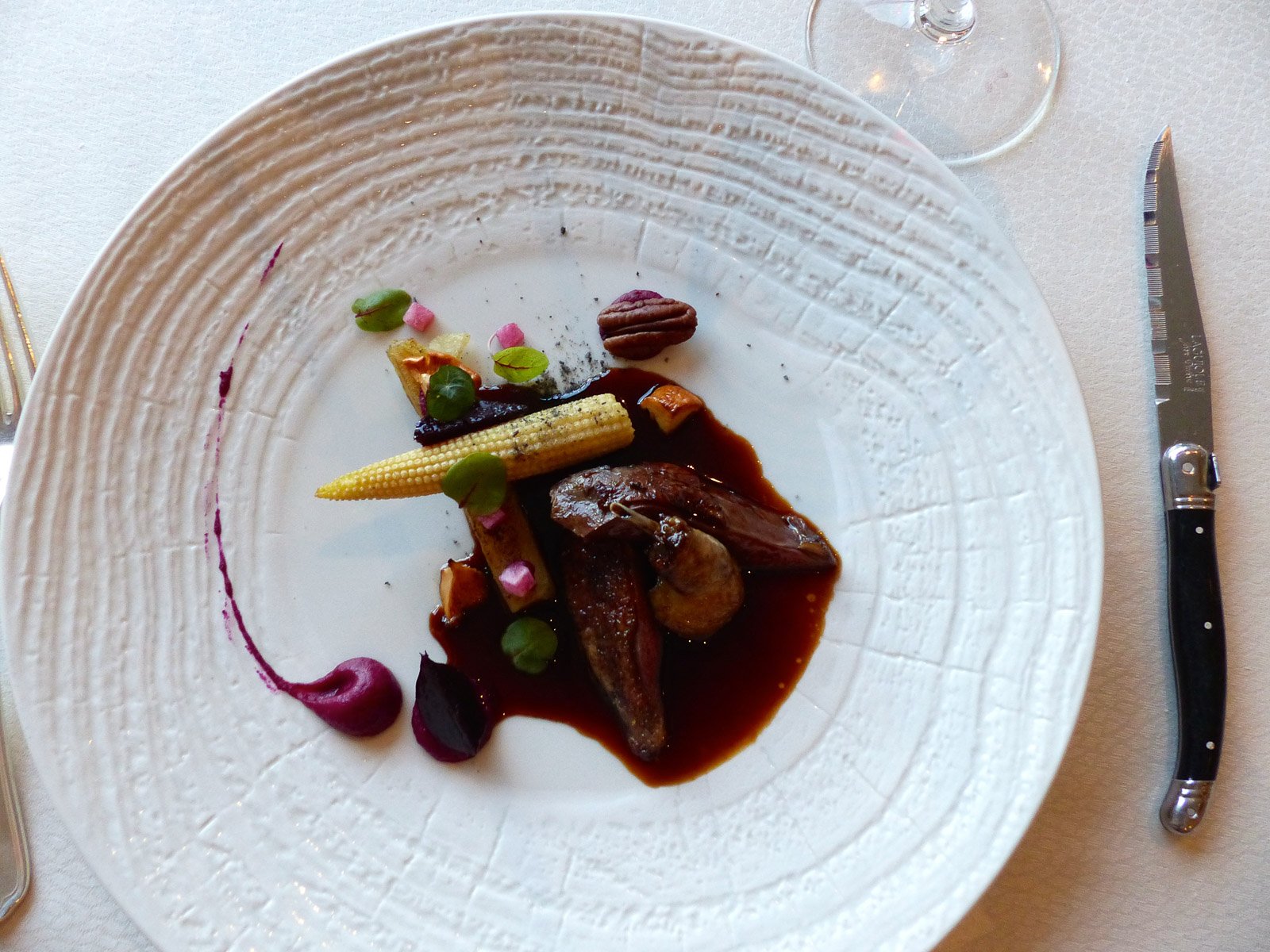
Hospitality is on display here from the first moment we enter — a center table filled with wines of all types – sparkling, still, and of course fortified – sets the stage perfectly for what is to come. The dining room with its sumptuous linens and beautiful tableware, is a refined and understated counterpoint to the lush views of garden and sea. When the first course arrives, I know we are in good hands. I start with one of the signature dishes, the trio of foie gras. Savory and sweet and meltingly tender, the different preparations reflect the creativity of the chef and are perfect with a glass of Pommery Brut. The next course is the Portuguese Scarlet Shrimp, a tribute to what the Portuguese do so well – fish and shellfish. It is succulent and meaty, redolent with flavors of the sea. With it, the sommelier suggests a glass of Maias Branco from the Dão region in the center of Portugal, where some lovely wines are being made. The highlight of the evening for me was the Pigeon Eucalyptus. Watching the Maitre d’Hotel sauce and serve the plate tableside was like observing the finest craftsman practice his craft. The gamey flavors of the pigeon, tasting of herbs and wine, paired perfectly with a glass of Post Scriptum 2013 from Douro’s Quinta de Roriz. Exotic Madeiran fruits infuse the Macaron for dessert, served with a lovely glass of Blandy’s Rich 10 years Madeira wine.
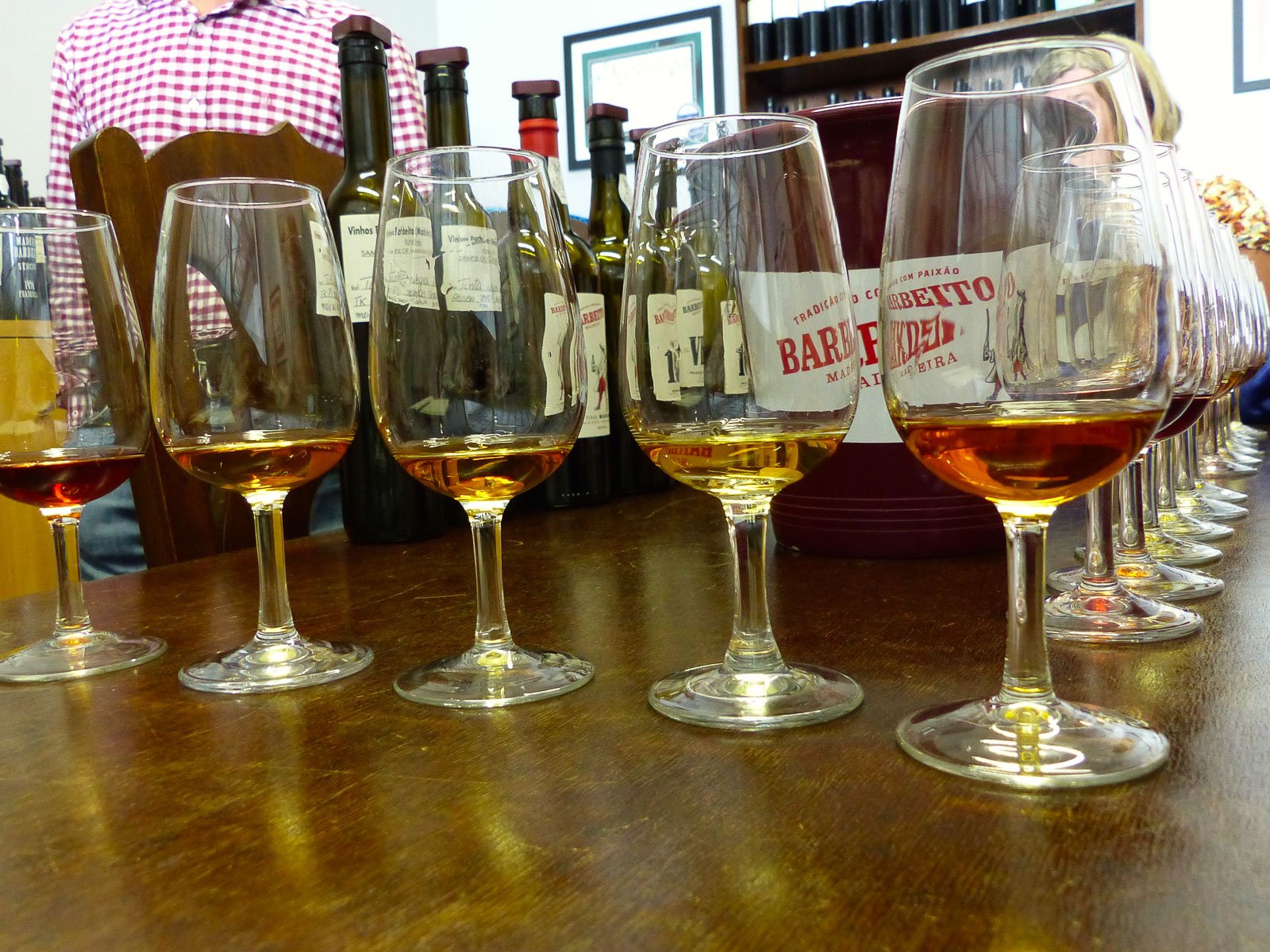


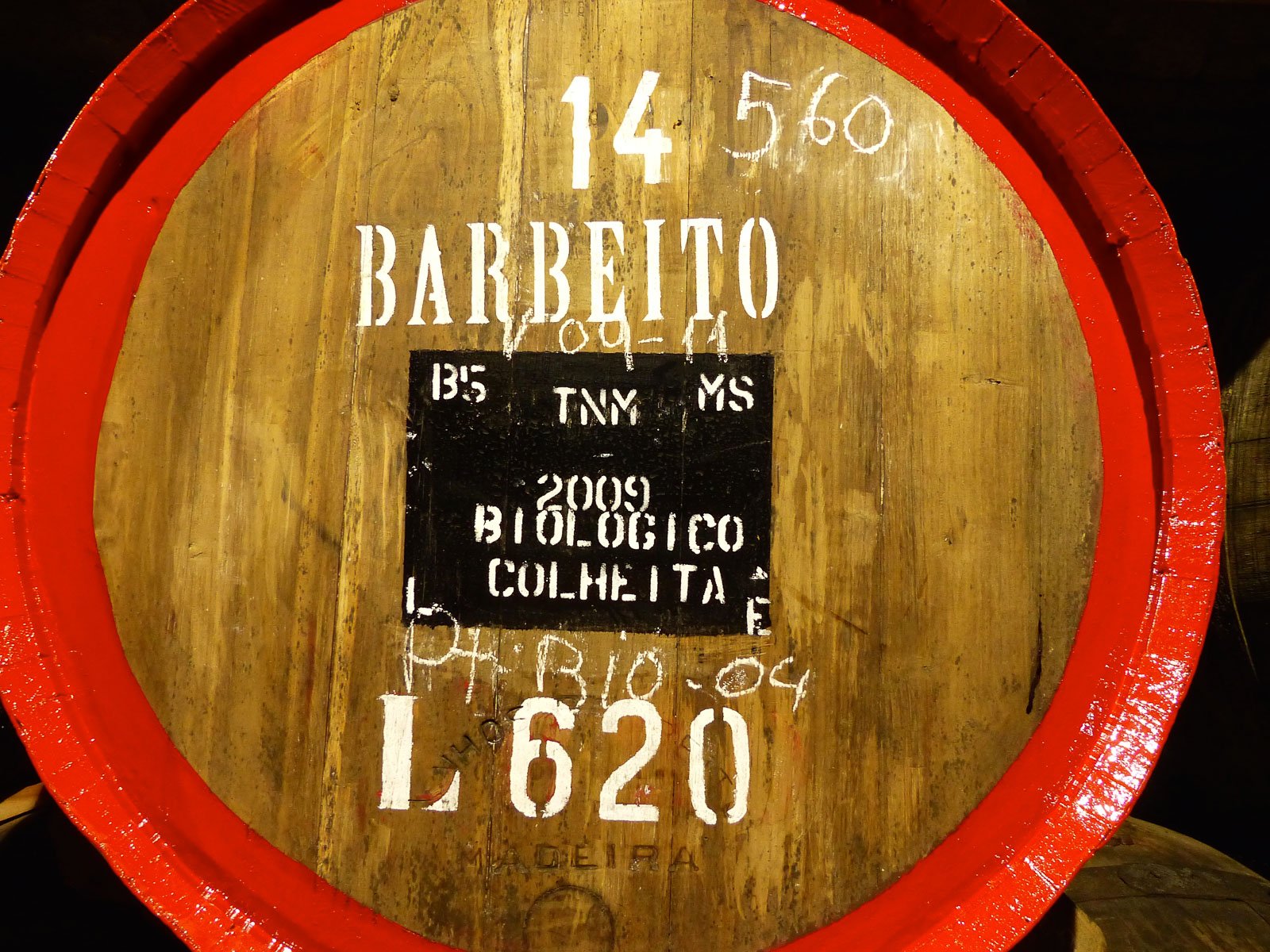
Blandy’s is the oldest Madeira wine producer and one of only seven in the world. Madeira’s fortified wines are produced by many, many growers on plots of land not much bigger than backyard gardens. Centuries ago, this local winemaking method was discovered when casks of wine returned to the islands after an ocean voyage in the heat of a ship’s hold. Today, vintners still use a process that involves heating the wine, which results in a distinctly robust flavor. Professional storyteller and passionate Madeiran Sofia Maul, along with the team at Discovering Madeira, invited me to join them on a visit to Barbeito, one of the youngest companies in the business of producing and exporting Madeira wine. We visited their facilities on a picturesque hillside above Câmara dos Lobos, just outside of Funchal. The Barbeito family entered the world of Madeira wine production in 1946 during a particularly dark time. Many producers had vanished, the world was recovering from World War II and shipping and exporting was next to impossible. But founder Mario Barbeito had a vision of the future where the legacy of Madeira wine would shine again. He bought substantial stocks from important families and was content to let the wines age. As the company passed from one family member to another, each one brought new energy to the company. Today, Barbeito is at the forefront of restoring the role of Madeira wine as a companion to food, and the wines are known for complexity, elegance and acidity. Their striking packaging as well as energetic marketing, aims to introduce new generations, and new markets, to the glories of Madeira wine.
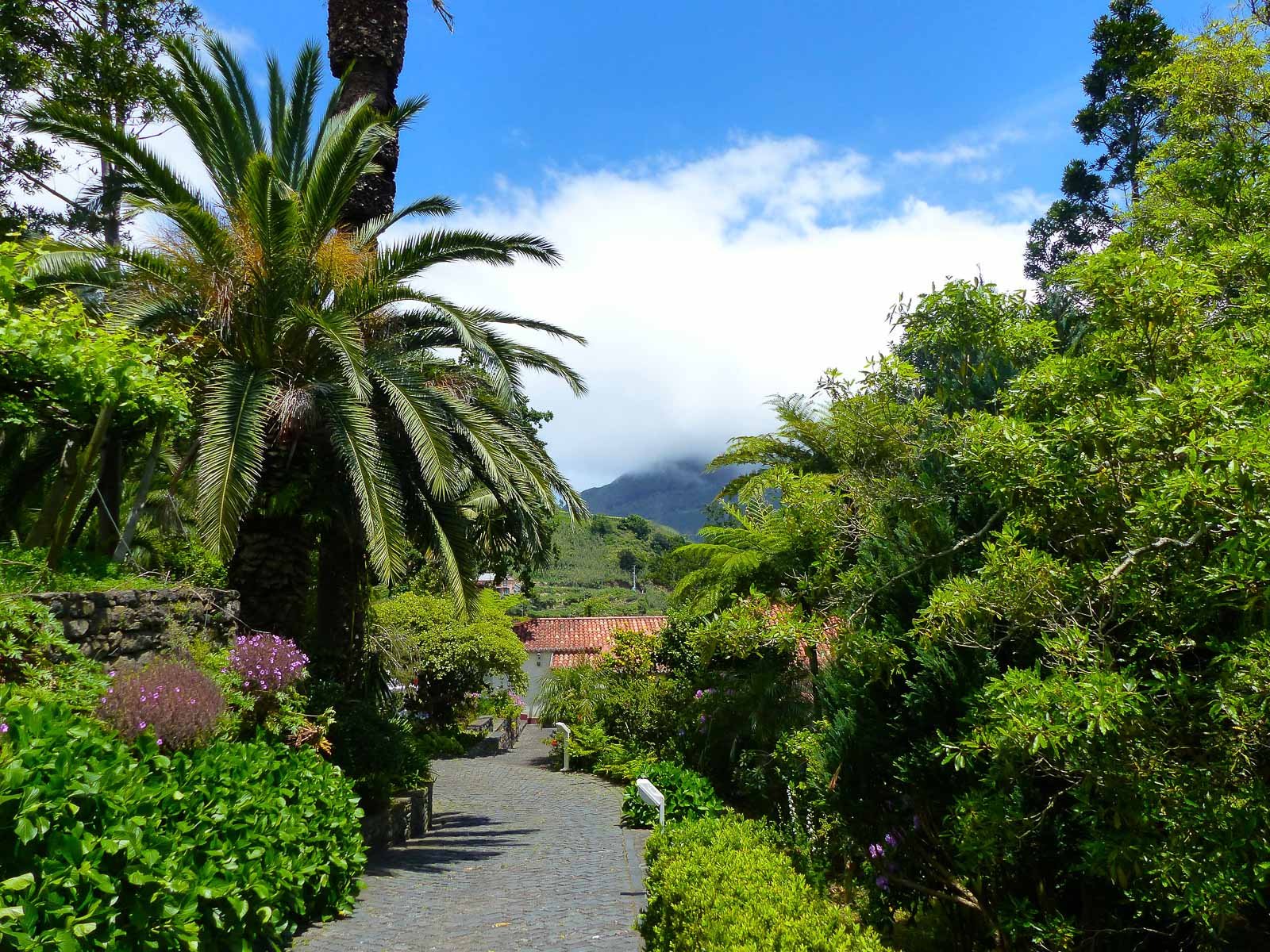
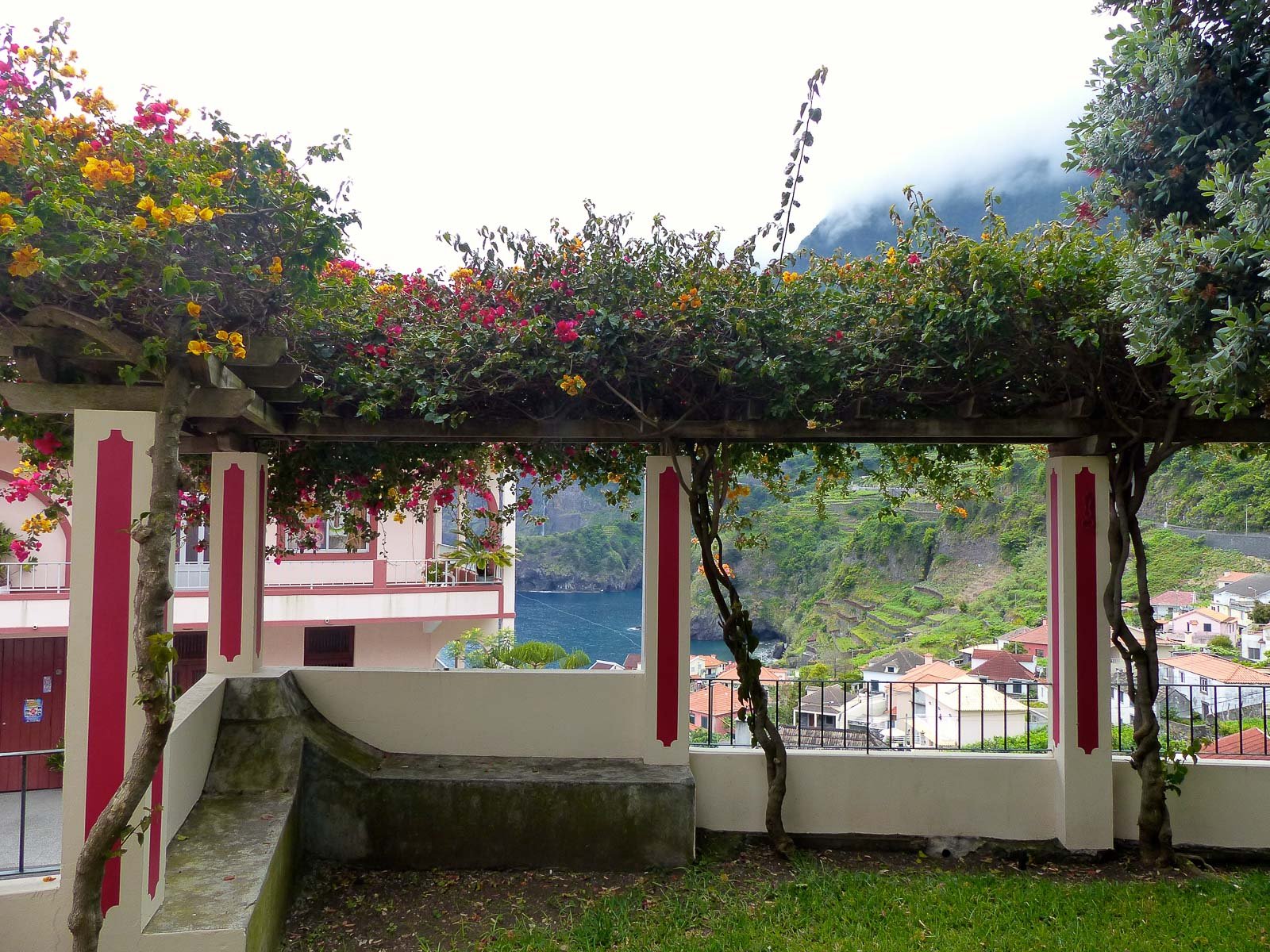
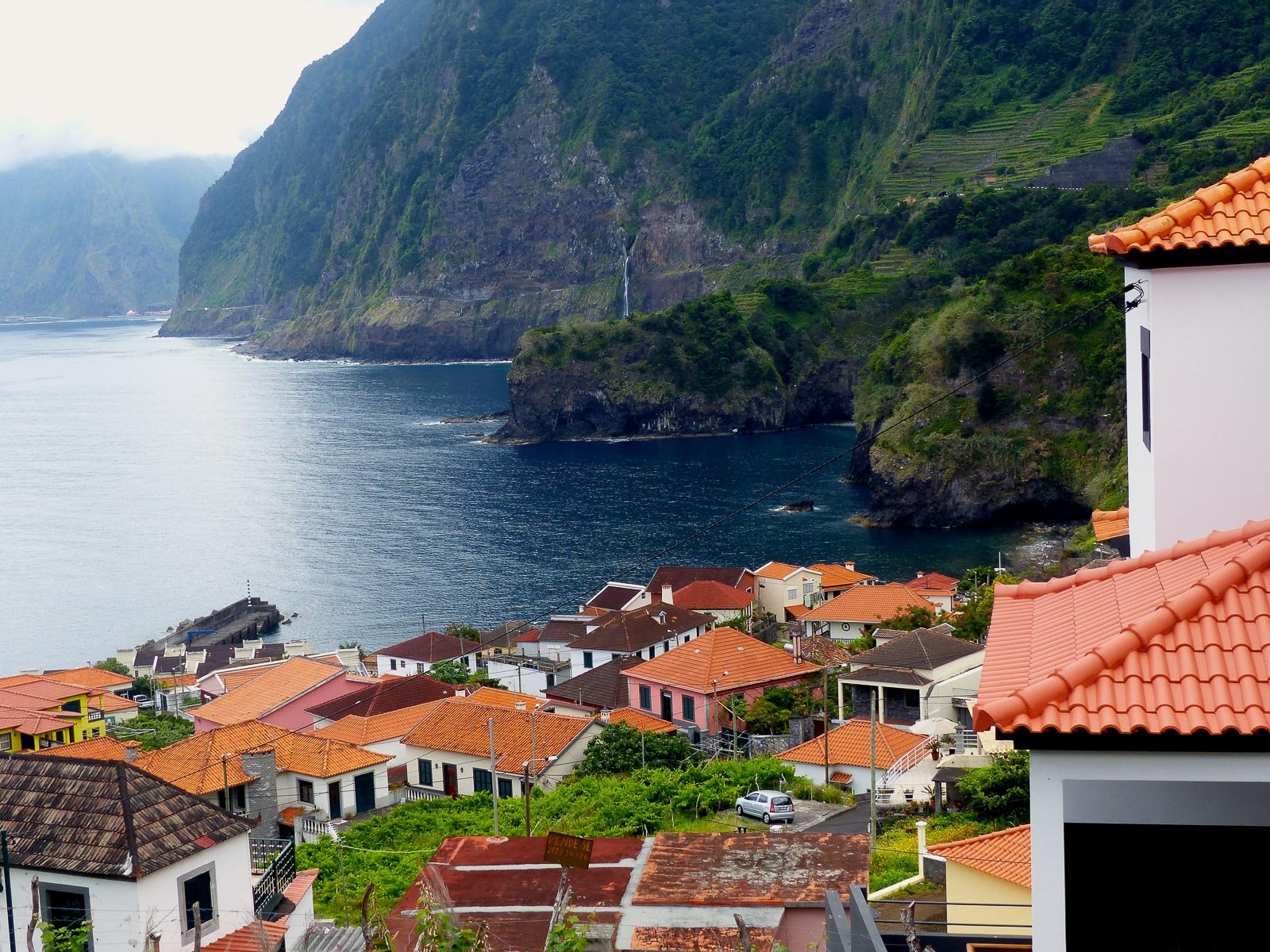
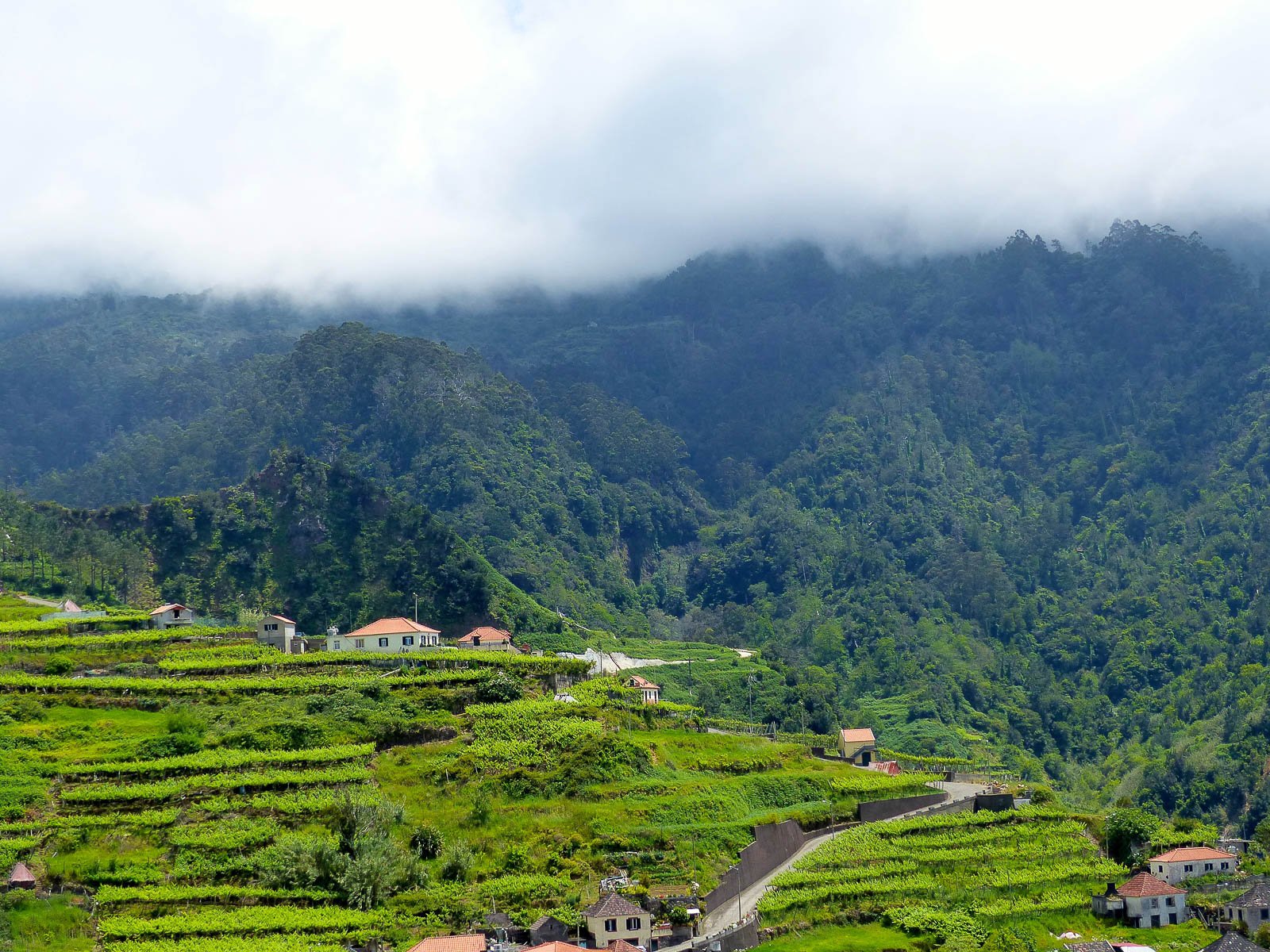

 And so it was, as we headed through vineyard after vineyard with the music of the grapes still playing in our heads, and the smell of the sea at our backs that we arrived for our last night at the Porto Bay Serra Golf in Santo da Serra. The gracious and charming hotel is set in an art nouveau house from 1920, high up in the hills where the air is noticeably cooler and the smell of the forest hangs heavy in the air. During our visit, the magnificent views were shrouded in fog, the clouds moving through in thick packs, surrounding everything in silence, as if in a dream. And in fact, it was the perfect way to leave Madeira – enchanted by this magical island.
And so it was, as we headed through vineyard after vineyard with the music of the grapes still playing in our heads, and the smell of the sea at our backs that we arrived for our last night at the Porto Bay Serra Golf in Santo da Serra. The gracious and charming hotel is set in an art nouveau house from 1920, high up in the hills where the air is noticeably cooler and the smell of the forest hangs heavy in the air. During our visit, the magnificent views were shrouded in fog, the clouds moving through in thick packs, surrounding everything in silence, as if in a dream. And in fact, it was the perfect way to leave Madeira – enchanted by this magical island.
Disclaimer:
This Madeira Getaway post was written by Maureen Ferguson. She traveled to Madeira island as a guest of Porto Bay Hotels. All opinions belong to Maureen Ferguson. All photo credits to Maureen Ferguson.



